

Science Videos
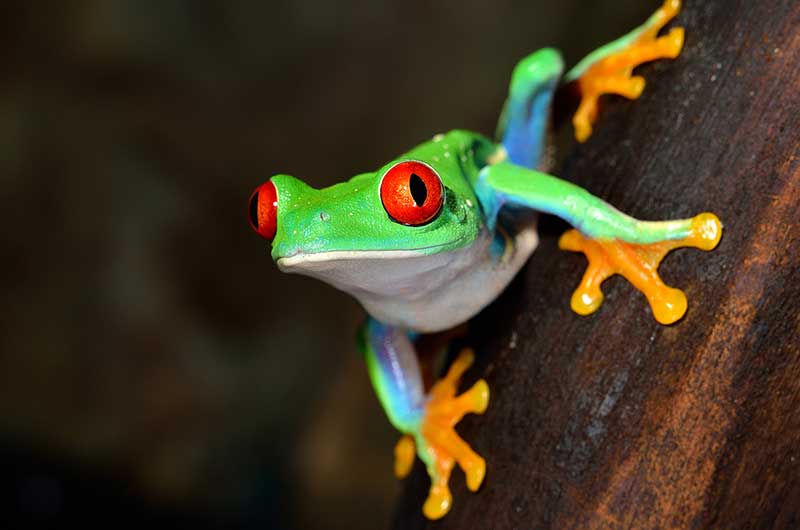
The Amazon Rainforest
Introduce your students to the layers of the rainforest and the many animals who live there. Explore the adaptations that have evolved over time to make for a successful existence of life in the rainforest.
Video length: 18:42 minutes.
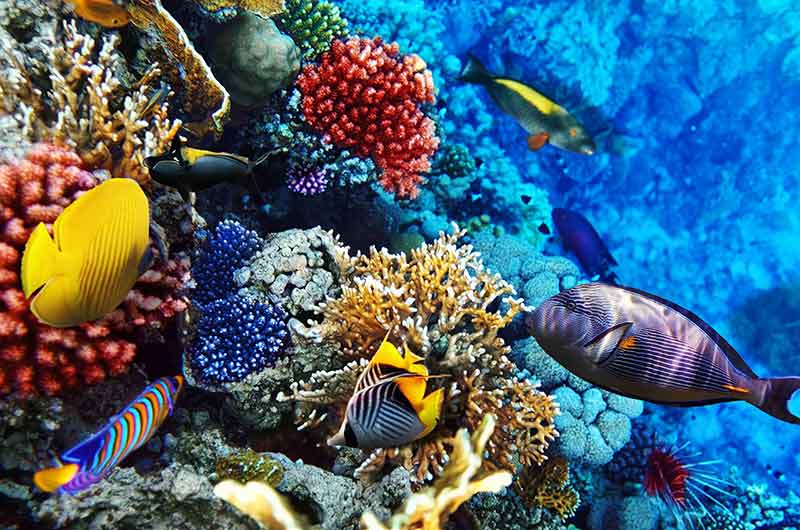
How Coral Reefs Are Formed
Explore the underwater world of coral reefs. Here, in Part 1, we’ll find out how coral reefs are formed over time. Learners will be able to see how a tiny coral polyp can create structures large enough to be seen from space. They will also begin to appreciate the diversity of life that exists in coral reefs around the world.
Video length: 13:20 minutes.
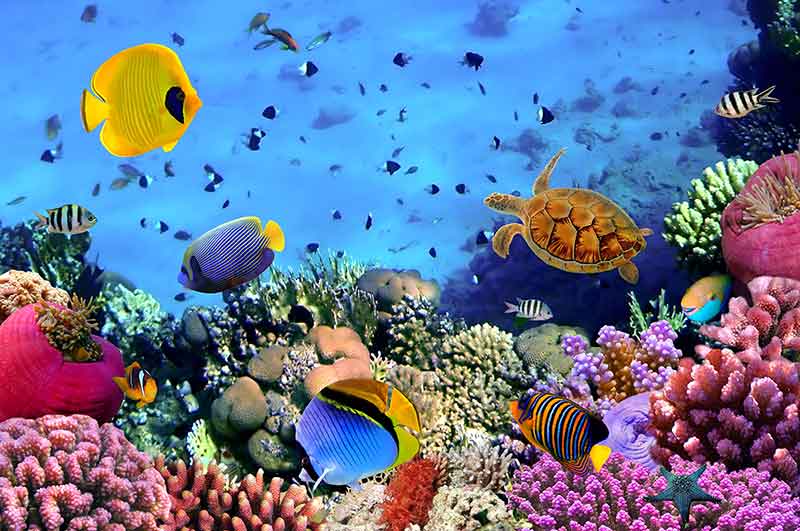
Who Lives On A Coral Reef?
Life on a coral reef is both bizarre and beautiful! Let’s get a first-hand look at the neverending roles of predator and prey. Introduce vocabulary such as adaptations, camouflage, symbiotic, and nocturnal. Lastly, students will be highly entertained by the remarkable array of animals that call a coral reef home.
Video length: 15:55 minutes.

Sahara Desert
Welcome to the Sahara Desert – the largest hot desert in the world! We cover the climate and landforms of the Sahara and then move on to meeting the many insects, birds, reptiles, and mammals that live in these harsh conditions. Find out about the many adaptations that allow plant and animal life to survive and thrive here, along with the people who have called the Sahara home for many millennia.
Video length: 31:30 minutes.
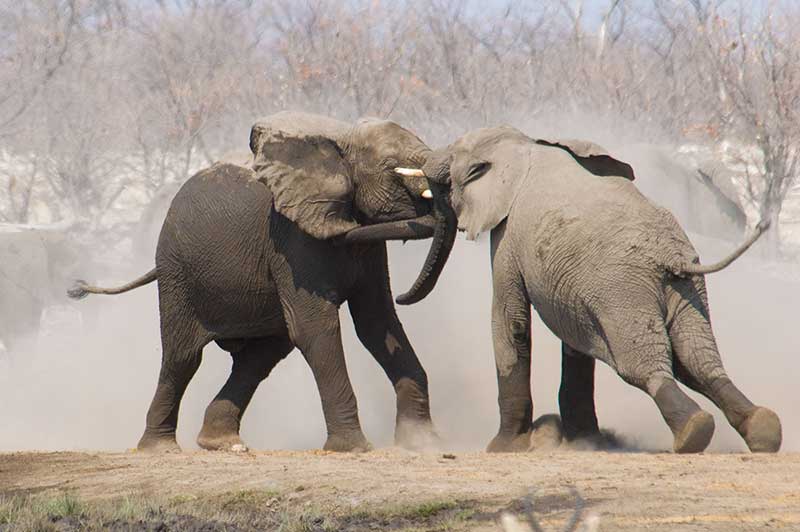
African Safari
Enjoy a trip through an African Safari park to see an incredible variety of wildlife. Take a first-row seat at the waterholes where the action is. You’ll see elephants, giraffes, warthogs, rhinos, zebras, lions, and so much more.
Video length: 15:15 minutes.

Galapagos Islands
Utterly unique and enchanting, the volcanic Galapagos Islands provide a captivating zoological adventure unlike any other. Marine Iguanas grazing from the sea floor, Vampire finches, giant tortoises and many other animals provide fascinating insights into adaptation and survival in this harsh and otherworldly environment.
Video length: 27:05 minutes.
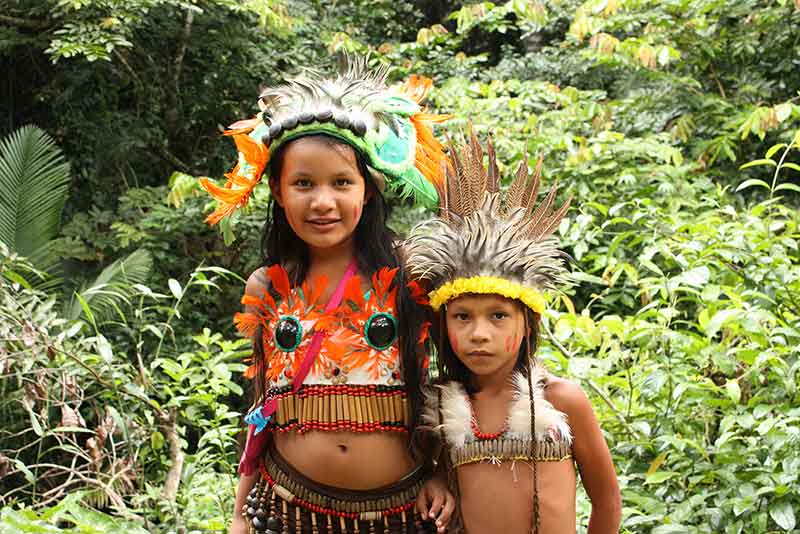
Amazon Rainforest: People & Threats (Grades 2-5)
Meet the people who have called the Amazon rainforest home for centuries. Learn about the threats facing all who live there and how everyone can help overcome these challenges.
Video length: 12:40 minutes.

Amazon Rainforest (Grades 5-9)
Introduce your students to the layers of the rainforest and the animals who live there. Explore the adaptations that have evolved over time to make for a successful existence of life in the rainforest.
Video length: 21:55 minutes.
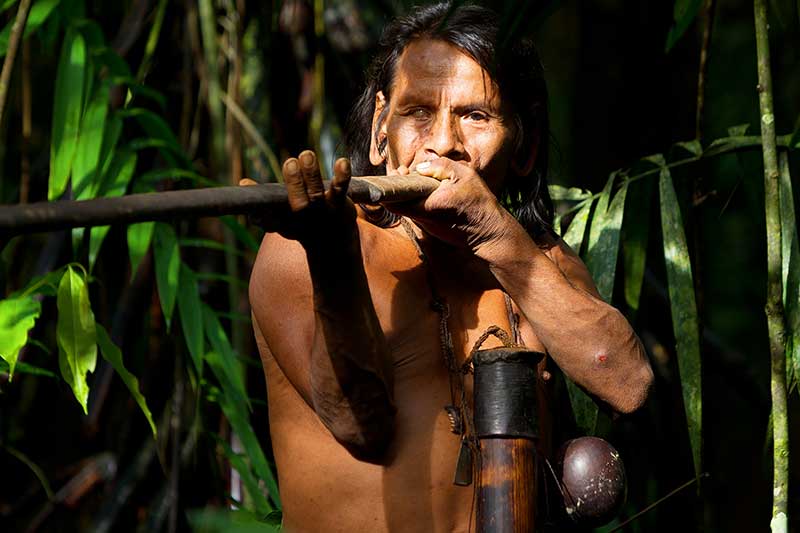
Amazon Rainforest: People & Threats (Grades 5-9)
Video length: 15:05 minutes.
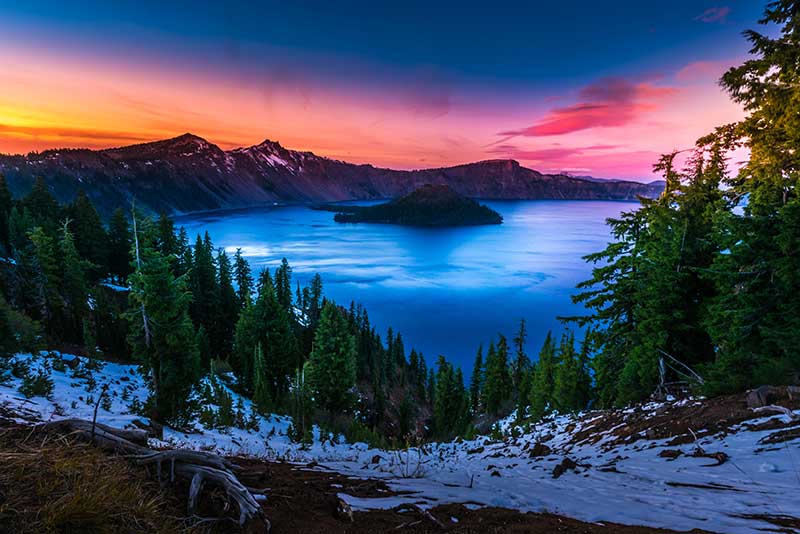
National Parks - Washington, Oregon, Idaho, Montana, Colorado
Dramatic glacier-covered rugged mountains, a temperate rainforest, craggy rock-towered coastlines, giant sand dunes, ancient cliff dwellings, and steep sheer rock canyons. All of these landscapes, their history, and more are explored in this tour of the National Parks of the northern part of the Western region.
Video length: 27:05 minutes

National Parks - Wyoming & Utah
Introduce your students to the magnificent landforms throughout the National Parks in Wyoming and Utah. In Wyoming, we’ll gaze in wonder at the drama of the Grand Teton Mountain Range, as we also find out about fault-block mountains. We’ll contrast that experience with the ever-moving, always-changing landscapes of Yellowstone N.P. including the “Old Faithful” geyser. Moving on to Utah, we’ll compare and contrast 3 National Parks – Bryce, Zion, and Arches National Parks. We’ll see how erosion and ancient salt beds have created these wondrous sites.
Video length: 22:40 minutes
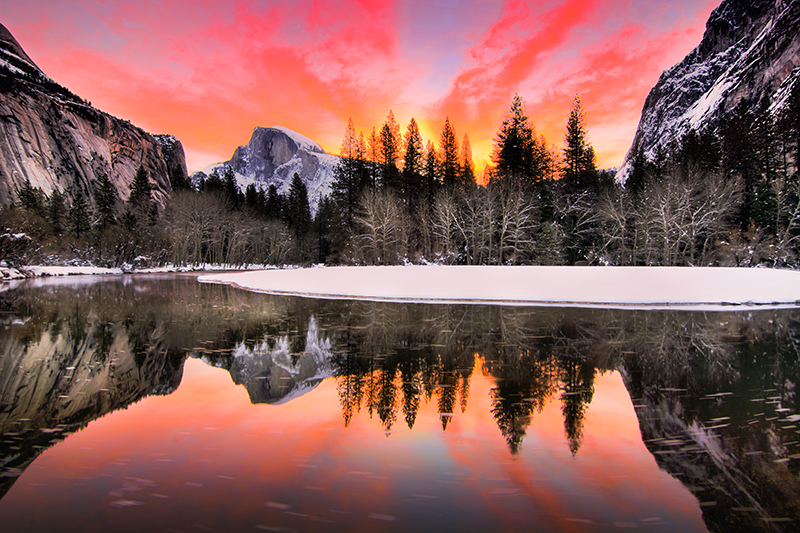
National Parks - California & Nevada
Come along as we visit Nevada’s one and only National Park – Great Basin. Then, we move on to visit 5 parks in California, comparing and contrasting along the way. Joshua Tree and Death Valley demonstrate high desert vs. low desert landscapes and conditions. Sequoia and Redwood NP’s show us the difference between trees that are gigantic in circumference vs. height. Lastly, we visit one of the crown jewels of National Parks – Yosemite N.P.
Video length: 17:20 minutes
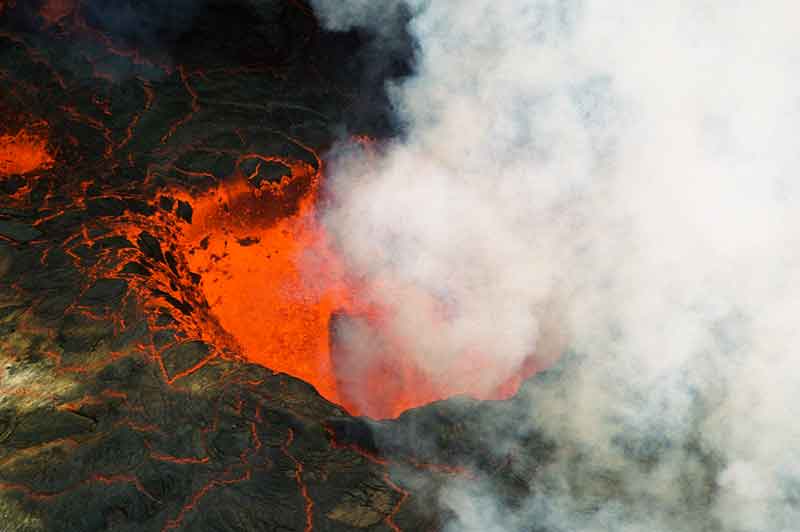
National Parks - Alaska & Hawaii
The running theme of this video is “extremes”, and there are many in both Alaska and Hawaii! We explore the beautiful and stark wilderness of the parks in Alaska, learn about glaciers and fjords, see some grizzlies and humpbacks, and end off with the volcanoes of Hawaii. A thrill ride for all!
Video length: 23:20 minutes
La Selva Amazonica (Spanish)
Presénteles a sus alumnos los estratos de la selva y los animales que la habitan. Explore las adaptaciones desarrolladas a lo largo del tiempo para lograr la prosperidad de la vida en la selva.
Video length: 19:20 minutes
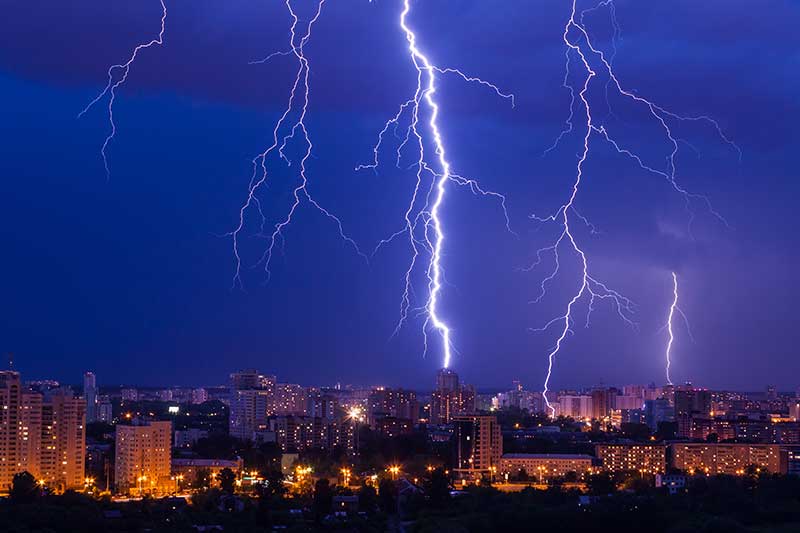
Grade 1 - The Earth Around Us
Video Storyline : People live in communities, where change happens every day. Around us we see a variety of land and water types which have helped to create our natural resources. We can also see changes around us throughout the four seasons.
Video length: 8:10 minutes.
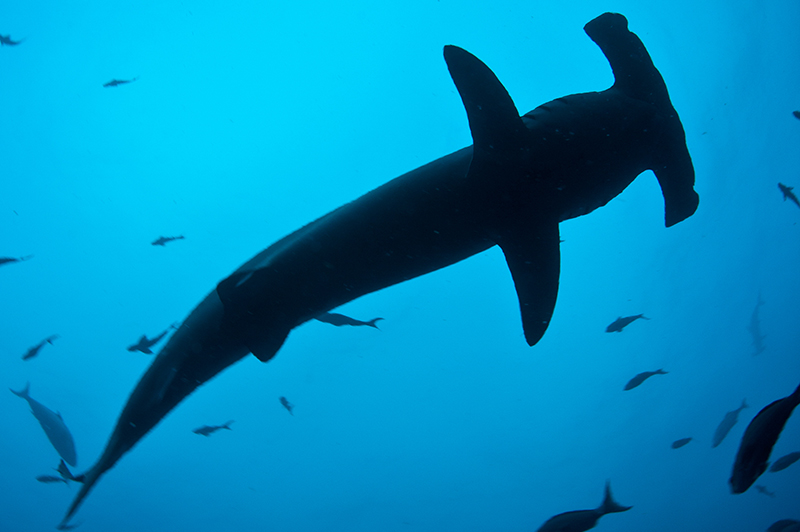
Galapagos Islands (Spanish)
Absolutamente únicas y encantadoras, las volcánicas Islas Galápagos proporcionan una cautivante aventura zoológica diferente de cualquier otra. Iguanas marinas pastando en el fondo del mar, pinzones vampiro, tortugas gigantes y muchos otros animales proporcionan unas vistas fascinantes de la adaptación y la supervivencia en este ambiente hostil y de otro mundo.
What Else Would You Like To See On This List?
Join Our List!
Get our Promo Codes, classroom ideas, latest video news, and more!
Join the thousands of your fellow educators who are already on our list.
You've successfully signed up!
Pin it on pinterest.
- Show search
Virtual Field Trips
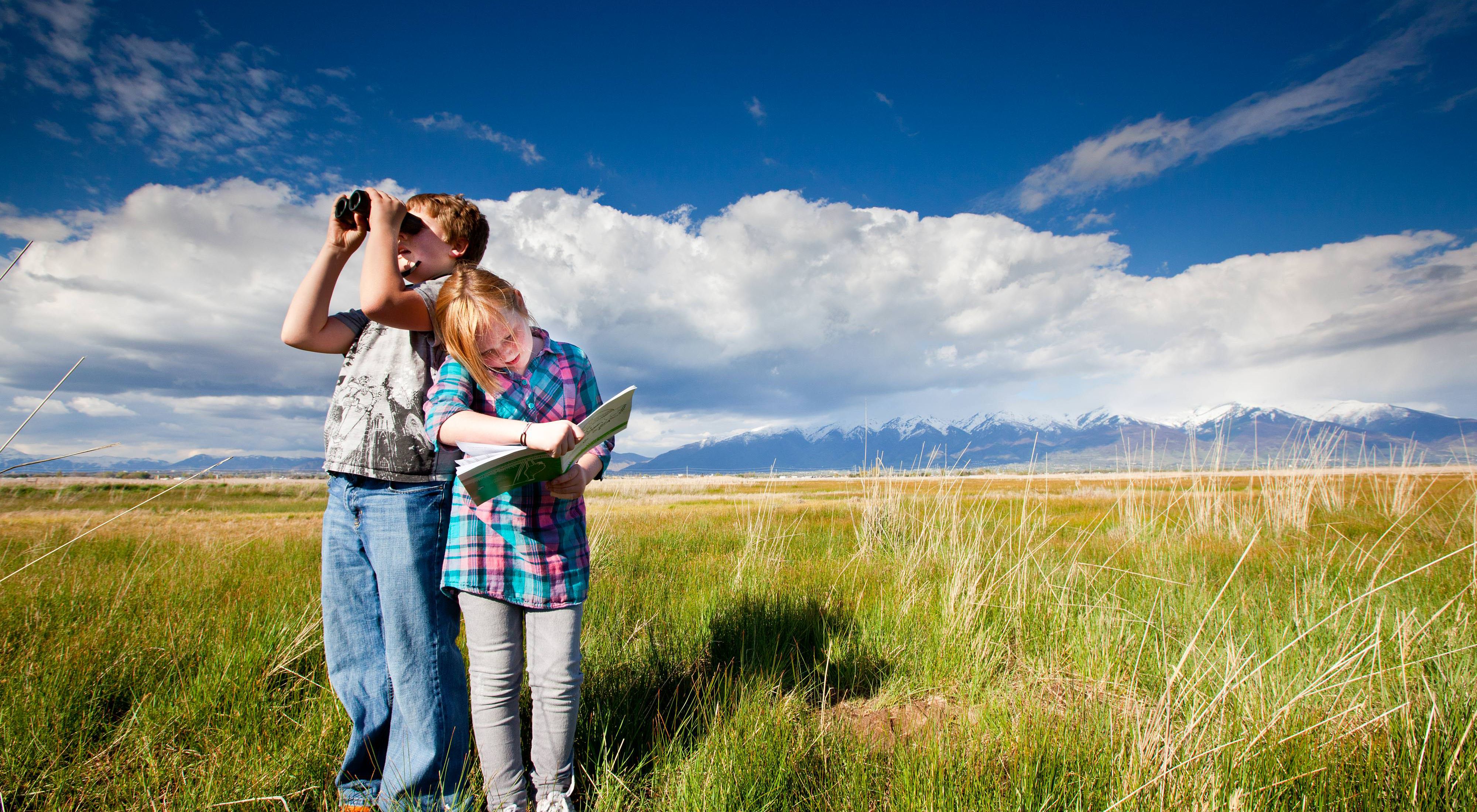
Explore the World with Virtual Field Trips
Designed for ages 9-15 but customizable for all ages, virtual field trips allow students to travel the world and explore natural environments without leaving the classroom. Each virtual field trip contains a video, teacher guide and student activities.
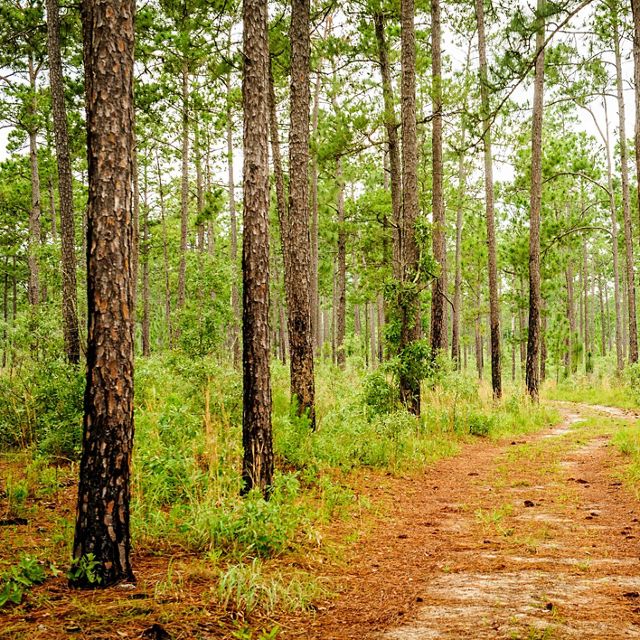
Working Trees: Reforestation and Responsible Forestry
Forests represent a powerful opportunity to pull carbon dioxide out of the atmosphere, helping to cool our planet while also providing clean air, clean water, and habitat for wildlife.
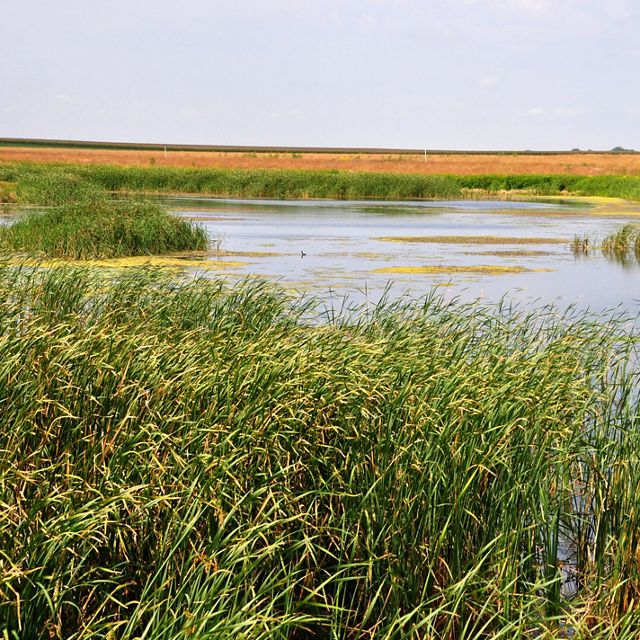
Less Harm on the Farm: Regenerative Agriculture
Food is more than something we eat to survive; it's a part of how we thrive. Learn how regenerative agriculture can help us feed a growing population while restoring nature.
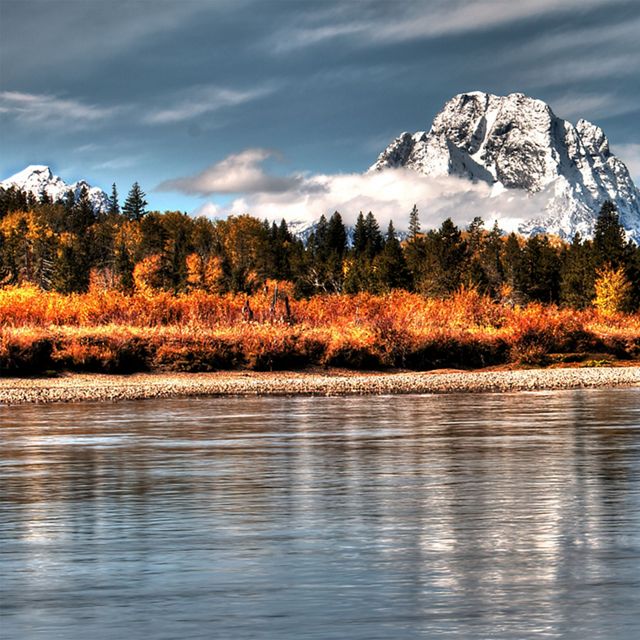
Climb-It Change
Explore how climate change is impacting alpine ecosystems and go on a climbing adventure with scientists who take you to some of the most stunning mountain ranges in the United States. This film is a Rocket Soul Studios production.
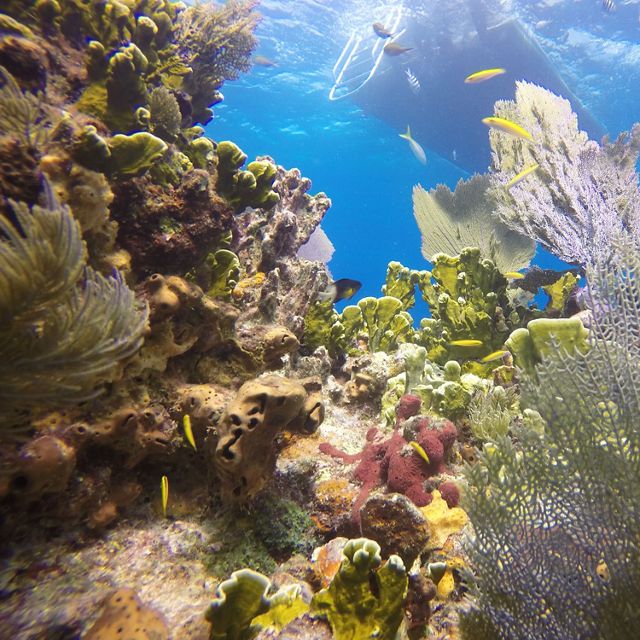
Protecting Our Oceans and Ourselves
More people rely on our ocean for food, energy, transport, recreation and other natural resources than any other time in history.
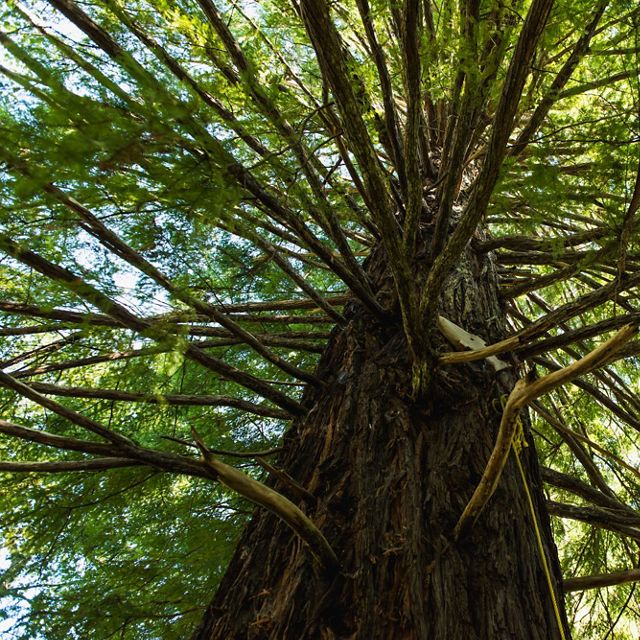
Climate Heroes: The Power of Trees
Trees are our climate superheroes! From Louisville, Kentucky, in the United States to St. Vincent and the Grenadines in the Caribbean, trees are playing critical roles in cleaning our air and improving our resilience in the face of climate change.

You’re the Scientist! Citizen Science, Frogs and Cicadas
The conservation community relies heavily on volunteers not only to restore natural areas but to help gauge the success of restoration efforts.

Changing Climate, Changing Cities
Get a front-row, ground-level seat to the challenges cities face as they confront this force of nature, and discover the solutions experts are promoting to mitigate it.
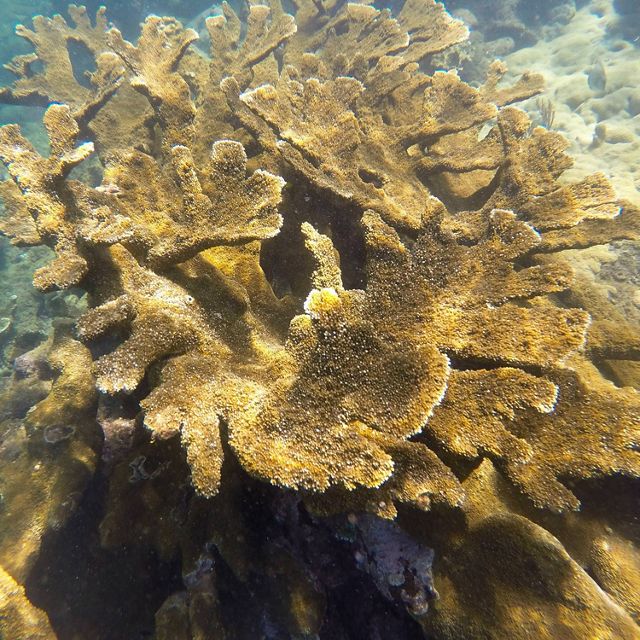
The Secret Life of Corals
Learn how fragile reefs are being damaged by human activity and climate change, and how scientists are developing ways to restore corals.
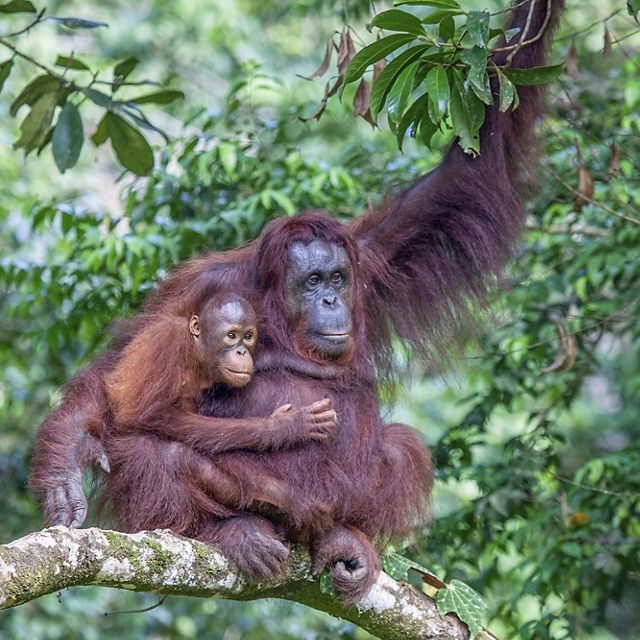
Borneo: The Symphony of the Rainforest
On this journey, we’ll learn how experts are using cutting-edge science to find out how healthy the rainforest is—and to discover where it needs some help!
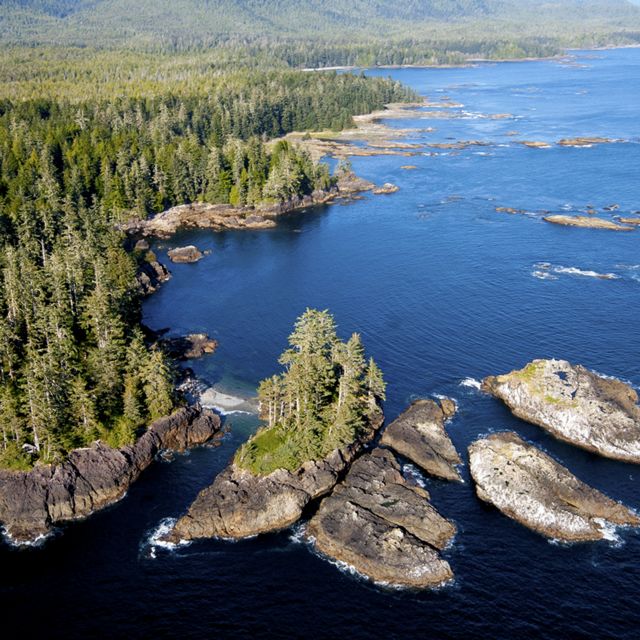
View from a Canoe
Can you imagine a place with 100 million acres of forest and 30,000 miles of coastline? It exists. The Emerald Edge is home to the largest intact coastal temperate rainforest.
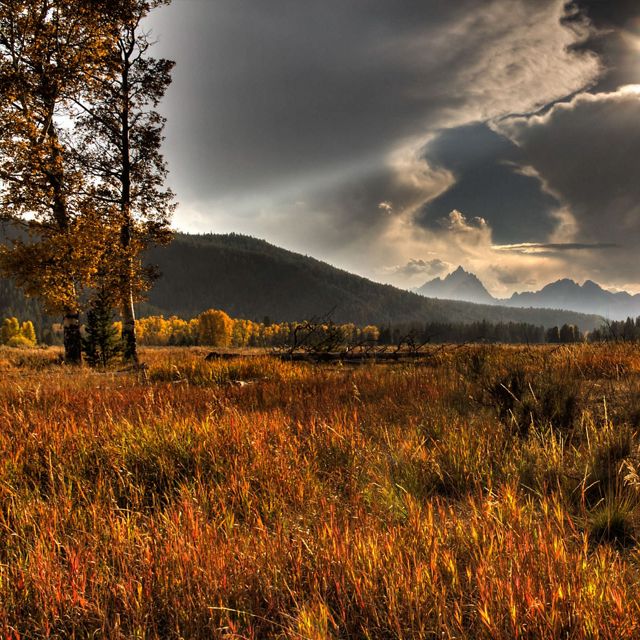
Wild Biomes: America’s Rainforests & Deserts
Two wildly different ecosystems, both dependent on the same precious resource: Water. On this virtual field trip, we’ll travel to Seattle and Arizona.

The Coral Reefs of Palau
Join our expert scientist, marine biologist Stephanie Wear, on a virtual field trip to the coral reefs of Palau where you'll explore amazing underwater cities.
.jpg?crop=669%2C0%2C2662%2C2662&wid=640&hei=640&scl=4.159375)
China’s Great Forests
Join our expert scientist Yue Wang, a conservation planning officer for The Nature Conservancy, on a virtual field trip across the world to two stunning provinces in China.

Powering the Planet: Renewable Energy
Join scientist Alex Wegmann as we embark on a Virtual Field Trip to explore a compelling question: How can we get the energy we need without harming nature?
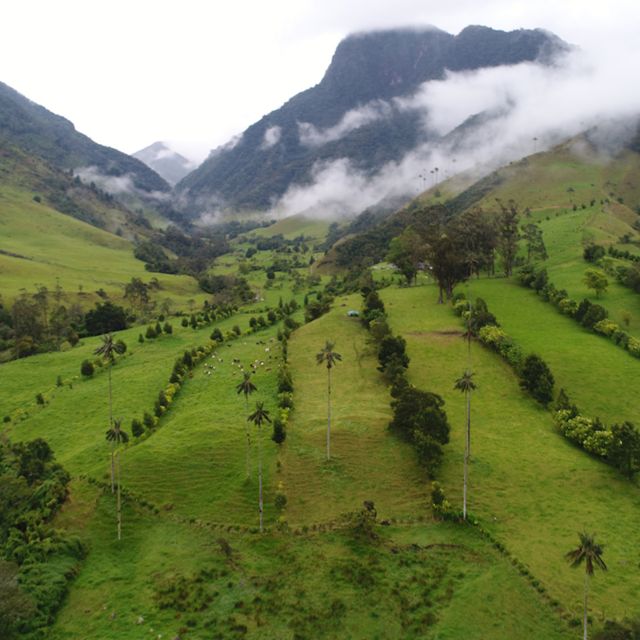
Journey of Water: Colombia’s Páramo
In this virtual field trip, we will explore the magical páramo ecosystem and the stunning mountain landscapes found just beyond the capital city of Bogotá.
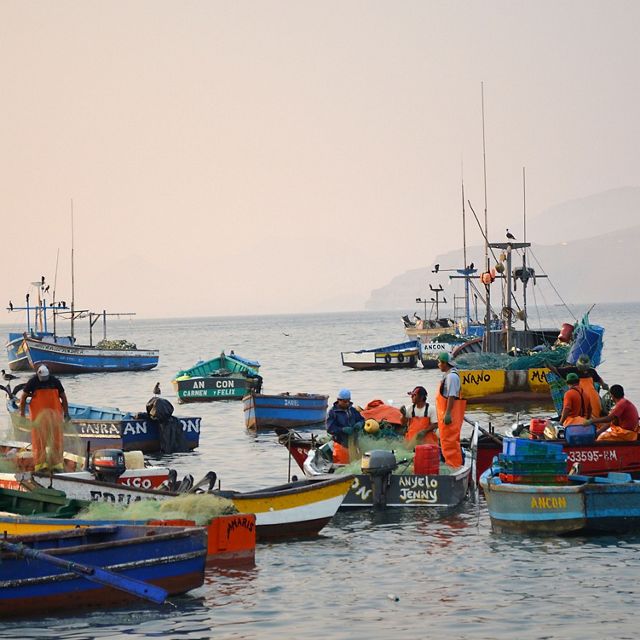
Peru: A Coastal Ecosystem
Join fisheries scientist Matias Caillaux to explore the Humboldt Current Ecosystem off the coast of Peru while learning about the area’s amazing diversity and productivity.
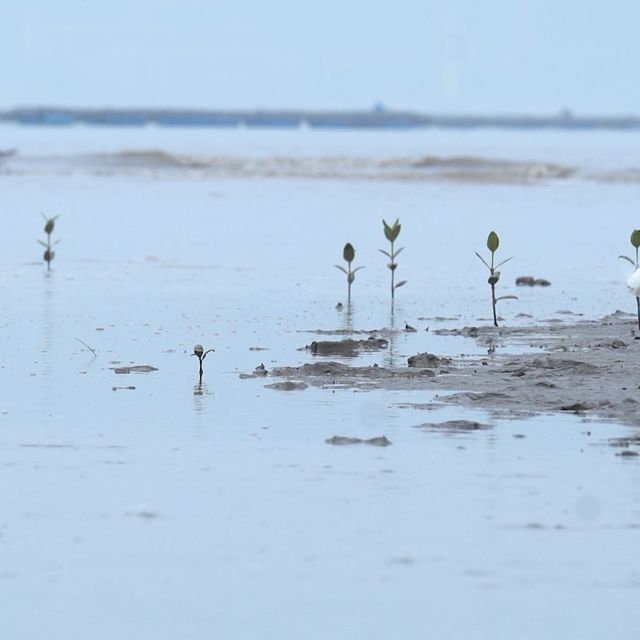
Ridge to Reef: A Virtual Field Trip to Hong Kong
The “Ridge to Reef” (R2R) concept is a holistic approach that takes into consideration all the environments within a watershed — from the top of the mountains down to the ocean — and shows that what happens on land affects what happens in the water.
Stay connected for the latest resources from Nature Lab
Don't miss new Nature Lab teaching guides and videos. Sign up to get the monthly Nature Lab newsletter with free environmental education materials for educators and families.
Explore Our Youth Curriculum
Access resources aligned to The Nature Conservancy’s research and designed specifically for a young audience and classroom use.
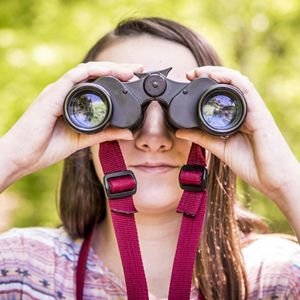
- Grades 6-12
- School Leaders
Win a Yeti, gift cards, and more in Our Teacher Appreciation Giveaway 🎁!
3 Incredible Science Field Trips That Don’t Require Permission Slips
Perfect for grades 3–8; watch them in your classroom, any time!

Want to take your students on a virtual field trip? You’re in luck! Check out these incredible, free trips from Nature Works Everywhere .
Can you imagine what it would be like to see a giant panda cub climbing a tree in China? Or watching a giraffe gallop through the grasslands in Kenya? My students would be enthralled. There’s something magical about letting them experience a place far, far away, where they can learn not only about the animals and their homes but also about science and geography.
Below are three virtual field trips we can’t get enough of. Watch these 45-minute videos with your class—any time! They’re perfect for grades 3–8, and each includes a teacher’s guide packed with discussion questions and more. Check them out below.
1. The Deserts and Grasslands of Africa
Head to Africa with scientist Charles Oluchina, where you’ll discover the importance of grasslands and learn how ecotourism in Kenya has benefited both people and wildlife. Students will see giraffes, lions, and elephants; the footage will make you feel like you’re on safari! You’ll also visit Burkina Faso and learn how one farmer invented an ingenious method to help restore forestlands that had been lost to desertification. Get a sneak peek below and then watch the full virtual field trip here .
2. China’s Great Forests: What the Giant Panda and Earth’s Climate Share
Do you know what a takin is? It’s a goat-antelope found in the eastern Himalayas. You’ll get to see some, along with golden snub-nosed monkeys and giant pandas, when you go on a virtual field trip to China’s forests. Expert scientist Yue Wang will explain the role forests and mountains play in the carbon cycle and climate change, and students will get a better understanding of just how important habitats are for both people and animals. Watch the full field trip here .
3. The Coral Reefs of Palau: Nature’s Amazing Underwater Cities
Underwater cities—sounds intriguing, right? The coral reefs of Palau, a network of islands in the Pacific Ocean, are just that. Dive into the water and explore the colorful reefs. Students will learn about the interconnected ecosystem built on symbiosis, where diverse organisms have evolved to protect, clean, nourish, and even mimic one another. It’s spectacular! Watch the full field trip here .
Check out our Best Field Trip Ideas for Every Age and Interest (Virtual Options Too!)
You might also like.
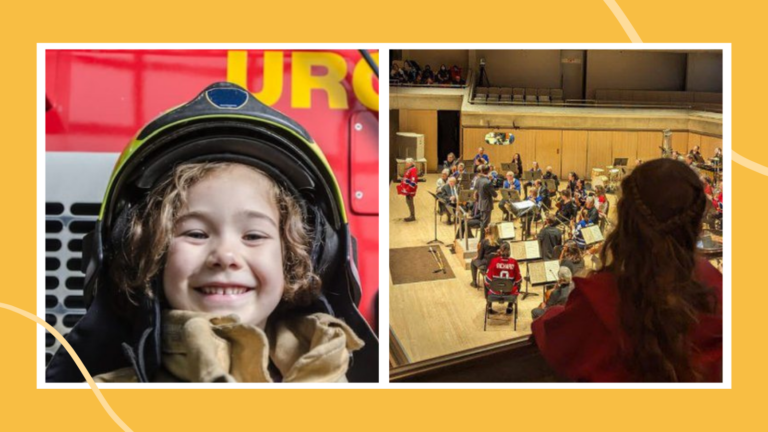
260+ Field Trip Ideas for Grades Pre-K Through 12 (In-Person and Virtual)
Get out of the classroom and explore the world! Continue Reading
Copyright © 2024. All rights reserved. 5335 Gate Parkway, Jacksonville, FL 32256

ROBOTLAB BLOG
Everything you need to know about robotics in education and businesses.

8 virtual field trips for STEM engagement
BY LAURA ASCIONE
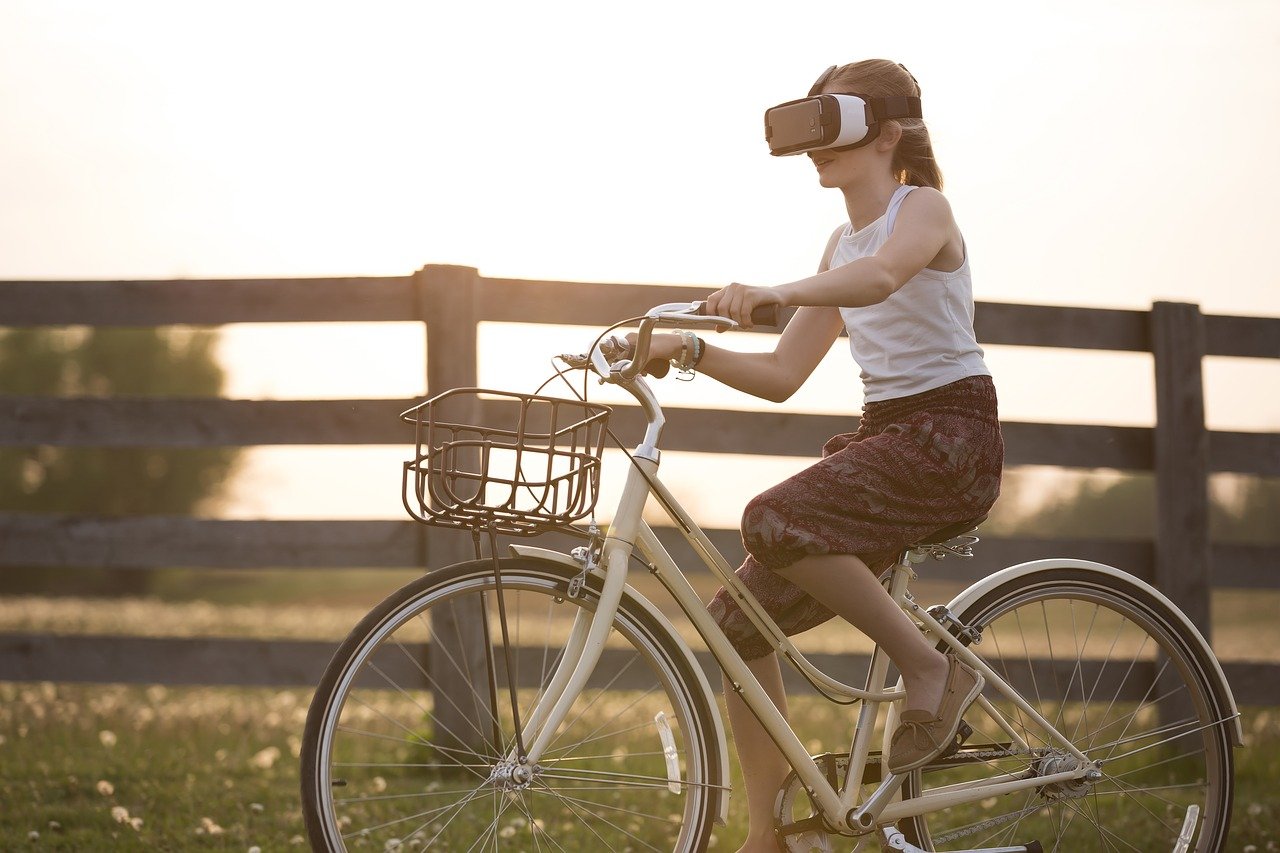
In-person field trips aren't possible during the pandemic, but virtual field trips offer fun learning experiences for students
Hands-on STEM subjects are challenging to teach when students aren’t in the classroom all the time, and student engagement is also a challenge during COVID. Virtual field trips address both of these persistent roadblocks.
Virtual field trips can help students get a front-row look at STEM outside of the classroom. Where can those engineering concepts you learn during school take you in adulthood? Is it possible to be creative in a STEM career?
Here are some virtual field trips highlighting STEM careers and experiences:
1. Slime in Space : What happens when you send Nickelodeon slime to the International Space Station? That’s exactly what a group of NASA astronauts set out to answer, and we want you and your kids to come along for the ride! This free 15-minute virtual field trip will take kids 250 miles above earth to see how slime, and water, react in a microgravity environment. It’s truly out of this world!
2. Innovation Generation : Transport students beyond the walls of the classroom and into a Stanley Black & Decker Makerspace where making and doing is a way of life! Inspire your students to be agents of innovation. Working alongside the experts of the Stanley Black & Decker Makerspace, students will see and experience first-hand how math, science, technology, creativity and teamwork can lead to technological advancements in our everyday lives.
3. Internet of Things: Infinite Possibilities Virtual Field Trip : The Internet of Things refers to a collection of computing devices – such as smart speakers, thermostats and sensors –which are connected to a network to allow for an improved real-time data to better manage two of the most critical resources to humanity: energy and water. Students will get an exciting look at how the internet they use in their everyday lives can be used to conserve natural resources, protect ecosystems, and create safer, more sustainable communities.
4. ecoAction Virtual Field Trip : We’re traveling to Seattle to see how Boeing is incorporating sustainable practices and innovations as they pertain to sustainable air travel, natural resource preservation, water quality control, and waste management. Follow along to learn some easy ways you and your community can be sustainable, too!
5. Girls Get Stem – Unleash Your Inner Scientist : Have your classroom join us as we experience a brand-new kind of camp – it’s not just swimming, sun, and s’mores – but STEM! Tune in to transport students to the STEM Center of Excellence where STEM will come to life in new and unexpected ways.
6. Gray, Green, Blue: Water Security and YOU! : People, businesses and industries, recreation, waste removal, transport, nature, and even lawn care all require water. Making sure there’s enough reliable, clean water for the health and livelihoods of people and natural environments is what we mean by water security, and it is one of the biggest challenges we face. Learn how nature can play a role in ensuring water security and what YOU can do to help!
7. The National Museum of Computing : The museum has virtually opened its doors for anyone to visit and take a tour of the world’s largest collection of working historic computers. Wherever you live, you can now journey through the history of modern computing from its very beginnings to the present day–from the comfort of a PC or device. You can stroll through our new, virtual experience–unguided or with one of the museum’s experts for a live, virtual tour where you will gain first-hand insight and knowledge about the 50,000 artifacts in the museum’s unique collection.
8. Museum of Science Virtual Field Trips : Students can talk with experts, observe leafcutter ants in action, discover the science behind Pixar Animation Studios, explore and identify animal skills, and more.
Discover more virtual field trips with RobotLAB!

- Feb 1, 2021 8:00:00 AM
- Posted by Natalia Galvis
- Topics: Math , Math Book , EdTech , STEM , Curriculum , teachers , students , Technology , Mathematics , Edchat , Gendergap , Digital Technology , teaching , online , lessons
Relevant Posts
Popular posts, subscribe to email updates, additional information.
© 2024 ROBOTLAB Inc. ALL RIGHTS RESERVED
*If you have questions related to how we use your data, please refer to our privacy policy link
WE ENGAGE COMMUNITIES ON A LEARNING JOURNEY IN HISTORY AND SCIENCE
Virtual Hands-On Science Field Trips
For reservations, call 810-237-3409.
Whether you’re teaching remotely or in the classroom, we can virtually present interactive science content to your kids. Activity kits include all the materials for fun, hands-on exploration that aligns with state standards.
⭐ Virtual Field Trips for Classroom Learning: Programs marked with a gold star are available as virtual experiences for in-person learners in their classrooms.
🟢 Virtual Field Trips for Remote Learning: Programs marked with a green circle are available as virtual at-home experiences for remote learners.

Grades Pre-K & K What’s the weather like? Design a weather report folder to use for observing and describing the weather. Students will see how weather affects our daily lives while drawing clothes on their weather bears. NGSS: K-ESS2.D

Grade K Students will build their own terrarium to take home while investigating living and non-living things. NGSS: K-LS1-1, K-ESS3-1, K-ESS3-3, 1-LS1-1

⭐🟢 Moon Phases
Grade 1 Make a glow in the dark moon phase book that will help kids explore the predictable pattern of the shapes of the moon we can see on Earth. NGSS: 1-ESS1-1

Grades 1-3 What makes sound? Students will find out as they investigate vibrations, pitch and loudness with fun hands-on activities. NGSS: 1-PS4-1, 1-PS4-4

⭐ Build Your Own Ecosystem
Grades 1-6 Investigate ecosystems and the water cycle, and learn what living things need to survive. Students will build an independent ecosystem to take home. NGSS: 1-LS1-1, 2-LS2-1, 4-LS1-1, 5-LS1-1

⭐🟢 Landforms
Grades 2-3 Explore Earth! Students will use clay to sculpt mountains, valleys, plains, plateaus, and other major landforms. Investigate where on earth these landforms can be found and what forces help shape our world. Discover the many different landforms that are located in our very own state of Michigan! GLCE: E.SE.02.21, 3-G1.0.1, 3-G1.0.2

⭐ Fossil Science
Grade 3 Make a plaster fossil model to take home and touch real fossils, while learning how fossils are formed and how they provide evidence of life long ago. NGSS: 3-L24.A

⭐🟢 Build-A-Buggy Challenge
Grade 3 Students will investigate how the shape of a vehicle affects its ability to move through the air. Design and build an aerodynamic buggy and then use a ramp and fan to see how far the buggy can travel. NGSS: 3-PS2-1, 3-PS2-2

⭐ Amusement Park Science
Grades 3-5 Students will explore forces and motion, while re-creating some of their favorite amusement park rides. Find out why you don't fall out when a ride goes upside down. Investigate contact and non-contact forces, while designing a tabletop marble roller coaster. NGSS: 3-PS2.A

⭐🟢 Moon Phases & Eclipses
Grades 4-6 Students will make a glow-in-the-dark moon phase book and an eclipse project while exploring the motion of the Earth and Moon. NGSS: 5-ESS1.B

Plan Your Virtual Field Trip!
Virtual Field Trip Logistics & Reservations Virtual History & Social Studies Programs Virtual Storybook STEM for Early Learners
Call 810-237-3409 to book your virtual field trip!
Your ticket for the: hands-on science virtual field trips, hands-on science virtual field trips.
- Our Mission
6 Free Resources for Virtual Field Trips
Teachers can use panoramic photos and videos of locations all around the world to make lessons more engaging.

How can you take students around the world without moving very far? If you haven’t yet, it’s worth trying virtual field trips and excursions. Now more than ever, these resources allow students to experience spaces they might not otherwise get to see, and there are many ways to introduce them to students as they explore a topic.
Virtual field trips can help students explore a new space, build vocabulary and background knowledge, and expand their world view. Whether you want to explore the setting of a novel, introduce a place-based math problem, or make connections to current events, virtual field trips can expand upon traditional lessons in many ways. One of the reasons I love them so much is that they allow students to view a space that piques their curiosity and provides context for their learning.
The term virtual field trip can be used to describe not just 360 degree photos and videos but also the live interactions and video conferences you might set up with a subject matter expert like an author or museum docent. Flipgrid (one of my favorite tools) hosts a handful of these types of virtual field trips .

6 Ways to Set Up Virtual Field Trips
The list of free virtual field trip resources here is adapted from my ISTE Live presentation in December 2020. Students can access these resources without logging into a new website—teachers can post the link to a 360 degree panoramic image or interactive experience in a platform students already use, making it easy for them to access in both traditional classroom settings and at home.
1. AirPano : This site includes 360 degree videos and images from around the world. You aren’t required to create an account—you can just jump in and start searching. When you’re ready to share with students, there is a link you can copy and paste or an embed option if you’re adding a widget to a site of resources. If you’re looking for international locations, AirPano is a great choice for exploring outdoor spaces, including Machu Picchu in the daytime, or the northern lights at night.
2. Google Maps Treks : In combination with Google Maps and Earth, Treks organizes content in an easy-to-navigate way. There are Treks for places around the globe, including the U.S. and Canada, Egypt, Nepal, and India. Each one has information and videos for students to explore.
3. National Geographic : National Geographic’s YouTube channel transports students all over the world to learn about different cultures, foods, animals, and more. Have students press play on the video, and as the video begins, they can use their cursor or trackpad to spin the video in different directions. They can tap on one part of the screen to move the video back and forth as they learn about a new place.
4. Nearpod : Known as an interactive presentation tool, Nearpod has virtual reality content built into its platform in the form of 360 degree panoramic views, which can be used as a great pre-reading strategy to introduce a new book or spark discussion about a social studies or science topic. To use these interactive experiences with your students, insert them into any Nearpod lesson in the same way you would add a slide or poll. (Please note: Nearpod also offers a paid plan with additional amenities.)
5. 360Cities : This collection of stock 360 degree images has lots of user-uploaded resources. There is a special school version that allows you to introduce students to more dynamic learning experiences; it has features such as a guided tour creator.
6. Google Arts and Culture : This tool has a variety of high-quality content, including interactive views that let students walk through notable spaces such as museums and explore examples of beautiful architecture like the Alhambra in Spain. You can let students know that this resource is mobile-responsive in addition to working on a web browser—they can access the content on a smartphone or tablet, or their Chromebook or laptop.
Engaging Students With Guided Questions
Set a purpose for students as they explore these resources by using prompts to guide their excursions. Potential prompts include:
- What do you think the weather is like in this place?
- How do you think someone captured this moment?
- What might be missing from this shot?
I’ve put together more prompts here .
If building student vocabulary is a primary goal of introducing virtual field trips to your students, you can point out different objects in the panoramic views or ask students to find certain features. For example, imagine students are learning about geological features and you take them on a virtual field trip to Hawaiʻi Volcanoes National Park. Together you can discuss vocabulary like crater , steam vent , and igneous rocks .
When sharing with students, include a prompt or question and post the link and task into a space they already have access to, such as Google Classroom, Seesaw, or Schoology. If you’re sharing a list of resources for students, colleagues, or families that includes some of these virtual excursions, you might curate a list of favorites using a tool like Google Sites, Spark Page, or Microsoft Sway.
Virtual Field Trips
Spark wonder, curiosity, and conversation in your classroom with a virtual field trip! Book one of our FREE interactive programs with a live educator at a date and time most convenient for you. All you need to participate is a computer, webcam, and internet access.
Schedule a 45-60 minute live online presentation for your class or group of students (minimum group size 8 students). Programs can be hosted by our team on Zoom or Google Meet, or we can join on your group's platform.
We ask that teachers/group leaders participate to assist with questions and issues that may arise.
Fill out our Program Request Form to schedule a Virtual Visit for your group. Please submit our program request form at least 3 weeks in advance of the program date! If you have any questions, you can email our School and Public Programs team .
Weather Wow: Up in the Air!
Did you know a typical cumulonimbus cloud can weigh 105.8 MILLION pounds?! How does it stay up in the sky?! Explore how the sun affects our Earth’s weather with an interactive experiment comparing hot and cold air. Transform your students into science sleuths and cloud detectives as we explore this mystery together and learn how air behaves when it changes temperature.
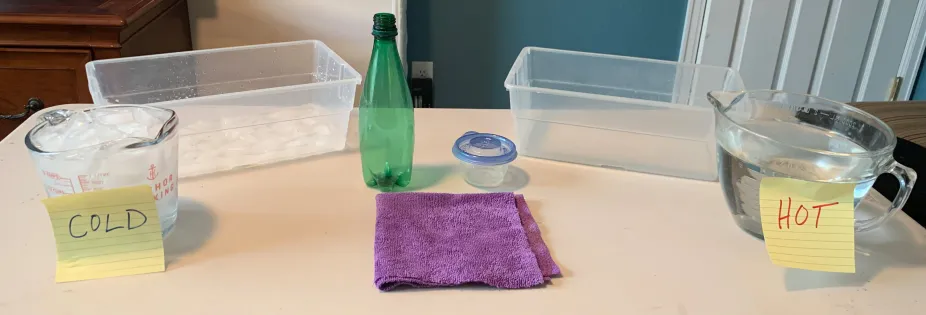
Supplies you'll need to try the activity at home during Let's Compare Warm and Cold Air!
To do the activity along with us, students will need: (all supplies except bottles can be shared in groups)
- A small plastic bottle, like a water or soda bottle
- About a tablespoon of dish soap in a container at least as large as the mouth of the bottle (you'll be turning the bottle upside down & dipping it in the container.)
- Two larger containers (such as bowls or tubs) - big enough to hold the bottom of the bottle with some water
- About 2 inches of cold, ice water in one of the larger containers
- About 2 inches of very hot water in the other larger container (it's best to boil the water just before the program begins, as it will cool a bit before we get to the demo to use it.)
Weather Wow: Hurricane Trackers
A new tropical cyclone has been detected in the Atlantic Ocean! Your class of meteorologists-in-training must work collaboratively in teams to track the developing hurricane and make an emergency preparedness plan for a coastal town. Immerse your students in an exciting, interactive adventure as they explore weather hazards, interpret and communicate incoming weather data, and discuss how to prepare and reduce impacts of the storm.
- Explore NCAR: Live Virtual Tour
Grades 6 - adult
The National Center for Atmospheric Research (NCAR) Mesa Laboratory sits nestled against the foothills of the Rocky Mountains in Boulder, CO. In addition to being an amazing architectural landmark designed by I.M. Pei, this world-class research laboratory focuses on an understanding of Earth system sciences including atmosphere, weather, climate and the Sun, which is the ultimate source of energy for Planet Earth. Explore the NCAR Mesa Laboratory and the importance of Earth systems to our society with a live NCAR guide on this interactive, virtual tour.
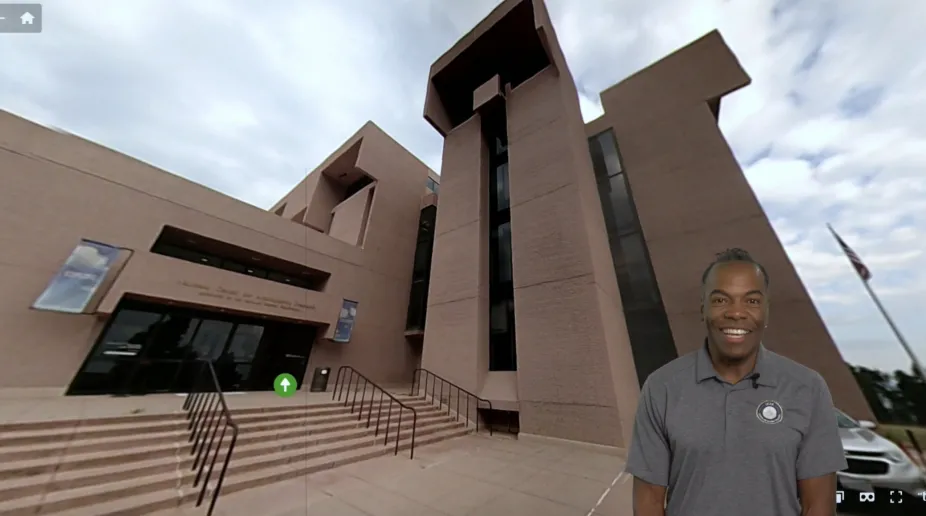
Please contact School and Public Programs Team with any questions about our educational programming and resources.
© 2020 UCAR
- Help K-12 Students Learn About Earth from Home
- The Learning Zone
- SkySci for Kids
Related Links
- Meet the Experts

ChatGPT for Teachers
Trauma-informed practices in schools, teacher well-being, cultivating diversity, equity, & inclusion, integrating technology in the classroom, social-emotional development, covid-19 resources, invest in resilience: summer toolkit, civics & resilience, all toolkits, degree programs, trauma-informed professional development, teacher licensure & certification, how to become - career information, classroom management, instructional design, lifestyle & self-care, online higher ed teaching, current events, virtual science field trips for students.
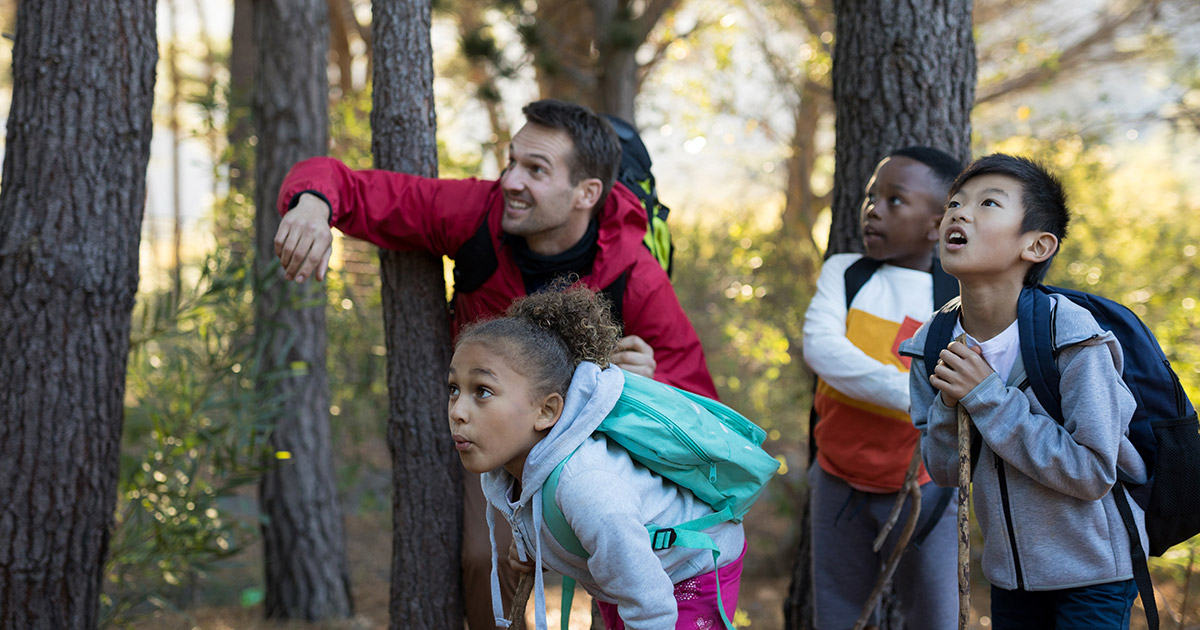
The COVID-19 pandemic poses unique challenges for educators . From ensuring students are safe in classroom settings to adjusting content delivery methods and finding ways for learners to effectively participate — even when they’re socially distant — 2020 is breaking new operational ground in schools across the country.
Despite best efforts by teachers and administrators, frustrations remain around field trips. Given the increased need for space and health security, most schools have taken field trips off the table. This is especially difficult for science educators who often leverage the hands-on nature of in-person activities to spark student interest and create new mental connections.
Technology offers an alternative, providing classes the opportunity to glean substantial value from virtual science experiences. Not sure where to start? Here’s a look at 10 educational websites to help teachers deliver on the potential of socially distant science.
Project Noah
Bird is the word! Also bugs, mammals, plants, fish and reptiles. While it may not be possible to take K-12 classrooms out exploring as in years past, Project Noah offers the opportunity for kids to learn about the vast array of species that populate our world. A combination of citizen wildlife photography paired with critical creature data, Project Noah makes it possible for students to discover the world around them without ever leaving the classroom
New for 2020: Nature School from Project Noah that includes video lessons, interactive activities and related classwork.
Navigating Nuclear
Take a tour of the country’s leading nuclear research facility at the Idaho National Laboratory. Kids get the chance to step inside a nuclear reactor, explore potential STEM careers, and discover how radiation and radioactive isotopes are used to make our world a better place.
UPM Forest Life
UPM Forest Life takes students across international borders to forests of Finland. The site features an interactive map that includes details about forest-dwelling species, information about the current efforts of forestry workers, and how these forests are used responsibly in Finland for recreation. Students and teachers can explore the map at their own pace or discover specific learning opportunities throughout the virtual landscape.
Journey to Mars
The Red Planet has once again captured human interest as NASA looks to the not-so-distant future of a manned mission to Mars. Students can discover how current technologies are helping prepare for the journey, what travel technologies are in development to enable the trip, and where innovation is needed to help the mission crews survive in the Martian environment.
Spark! Online Education
Science happens everywhere — and that includes the NASCAR racetracks. Spark! Online Education features STEAM-driven activities to help students see the real-world applications of science on the speedway. Students can learn about subjects ranging from creating aerodynamic car models, to discovering how energy types impact race outcomes, and understanding the role of sound in NASCAR racing. Start your engines — it’s science time!
IoT: Infinite Possibilities
The Internet of Things is everywhere, but how exactly does it work? More importantly, how can it be used to improve life on Earth? This virtual field trip explores how IoT technology can be used to manage two critical resources — energy and water — and create safe, sustainable communities. Plus, teachers can download the companion Educator Guide to build their own lessons around IoT.
Solar System Scope
How well do you really know the solar system? Most of us can name the eight planets (poor Pluto!) and have a reasonably solid grasp on the structure of our solar neighborhood. The Solar System Scope takes things a step farther with an interactive map of our local cosmic community. Kids can use the map to see where each planet is located relative to the sun, click on it for more information about its surface and internal structure, and see how these planets appear in our night sky.
The National Aquarium
Here fishy, fishy, fishy! The National Aquarium’s virtual tour lets students explore this fantastic aquatic resource from the comfort of their own classrooms. Here students discover more about the diverse sea life that makes our world so unique.
Operation Montserrat
Who wants to go on a mission? That’s the mandate of e-Mission virtual experiences from Wheeling Jesuit University. Classes can apply for interactive undertakings such as responding to the real-life explosion of the Montserrat volcano. Using climate and seismic data, kids and teachers will prepare for their mission over the course of three weeks, then put their skills to the test by attempting to save the residents of Montserrat from this fiery monster.
The Nature Lab
Offered by the Nature Conservatory, the Nature Lab offers a four-week virtual program designed to help students better understand how nature works and how humans can help our planet prosper. Week One focuses on Food and Water Sustainability, Week 2 on Climate Change, Week 3 on Building Healthy Cities, and Week 4 on Protecting Land and Water.
While COVID-19 means classrooms are anything but normal, virtual field trips and digital science experiences can help kids discover the wonder of our world — even at a distance.
You may also like to read
- Virtual Field Trips for Kindergartners and Elementary Students
- Five Exciting Virtual Education Field Trips
- 3 Interactive Virtual Field Trips for Social Studies Students
- Field Trips: Are They Really That Valuable?
- Popular Science Websites for Students
- Virtual Museum Tours for Students
Categorized as: Tips for Teachers and Classroom Resources
Tagged as: STEAM , STEAM - Pillar , STEM
- Early Childhood Education: Resources, Theorie...
- Online & Campus Master's in Early Childhood E...
- STEAM Teaching Resources for Educators | Resi...

- Integrations & Access
- Content Partners
- Science Techbook
- Mystery Science
- Pivot Interactives
- DreamBox Math
- Reading Park
- Reading Plus
- Social Studies Techbook
- Augmented Reality
- Professional Learning
- Research & Impact
- Success Stories
- Leadership Blog
- Courageous Leaders
- Communications Resources
- Discovery Educator Network (DEN)
Virtual Field Trips
- Educator Blog
- Puzzlemaker
- Career & Technical Education
- Teacher Retention
- Supporting Literacy
- Education Funding
- About Corporate Partnerships
- Our Corporate Partnerships
- Join our Network
- STEM Careers Coalition
- Career Connect
No permission slips required! These virtual events let educators take students to amazing places and give them remarkable experiences, without ever leaving the classroom.
Featured and upcoming virtual field trips.
Join us for our Virtual Field Trips or watch them on-demand after their premieres. Each no-cost Virtual Field Trip comes with a companion guide packed with standards-aligned, hands-on learning activities! Select one of the options below to register.
On-Demand Virtual Field Trips
Discovery education & the nba: a slam dunk partnership, “innovators for impact” virtual field trip with olympian katie ledecky and panasonic, bridge to the future: a virtual field trip into extended reality, arctic adventures: polar bears at play virtual field trip, the science & behavior of safe driving: it takes all of us virtual field trip, an ounce of prevention virtual field trip, the courage to act: forming a chain of resistance.
- Prodigy Math
- Prodigy English
- Is a Premium Membership Worth It?
- Promote a Growth Mindset
- Help Your Child Who's Struggling with Math
- Parent's Guide to Prodigy
- Assessments
- Math Curriculum Coverage
- English Curriculum Coverage
- Game Portal
The 22 Ultimate Virtual Field Trips & Tours for Students

Written by Maria Kampen
Inspire your students to love learning with Prodigy Math.
- Teacher Resources
What is a virtual tour and how does it work?
Technology powering virtual field trips for students, 22 best virtual field trips for students, how to incorporate virtual tours into learning activities.
Imagine taking your entire class to see one of the seven wonders of the world up close and personal — and then being back at school before the final bell rings.
The rise of online learning activities during the pandemic accelerated the availability of virtual field trips , tours and experiences for students of all ages. Now there are many interactive virtual tours available to places that would be impossible to reach on a class trip — the pyramids in Egypt, the Louvre museum in Paris or even an African safari.
We put together a list of 22 unforgettable virtual field trips and experiences that will help your students see amazing sights, connect their learning to real-world experiences and expand their horizons.
Virtual tours allow students to explore noteworthy places around the world, from the comfort of their home or the classroom.
Virtual tours give students the opportunity to stop, explore and guide learning at their own pace. While they’re exploring, they can get up close to nature or artifacts that might not otherwise be easily accessible.
Virtual tours can be many different things, including:
- A live webcam of a zoo or animal habitat
- A 360 degree view of a location you can manipulate
- Pictures enriched with helpful information and diagrams
Even ten or fifteen years ago, video tours would have been rare or impossible. Advancements in technology and education have combined to help people learn and explore from anywhere!
- National Geographic creates TV series about nature, history and archaeology
- Food shows like Netflix’s Salt Fat Acid Heat take viewers on food journeys across the world
- Planet Earth , a television series, brings far-flung locations to your living room or classroom
- Discovery Education gives educators access to multimedia resources that supplement classroom learning
- Video conferencing technology like Zoom lets you connect with people and learning experiences around the world
We love being able to sit at home or in the classroom and learn about different foods, cultures and geography. Why not introduce that to your students?
1. Take a trip to the zoo
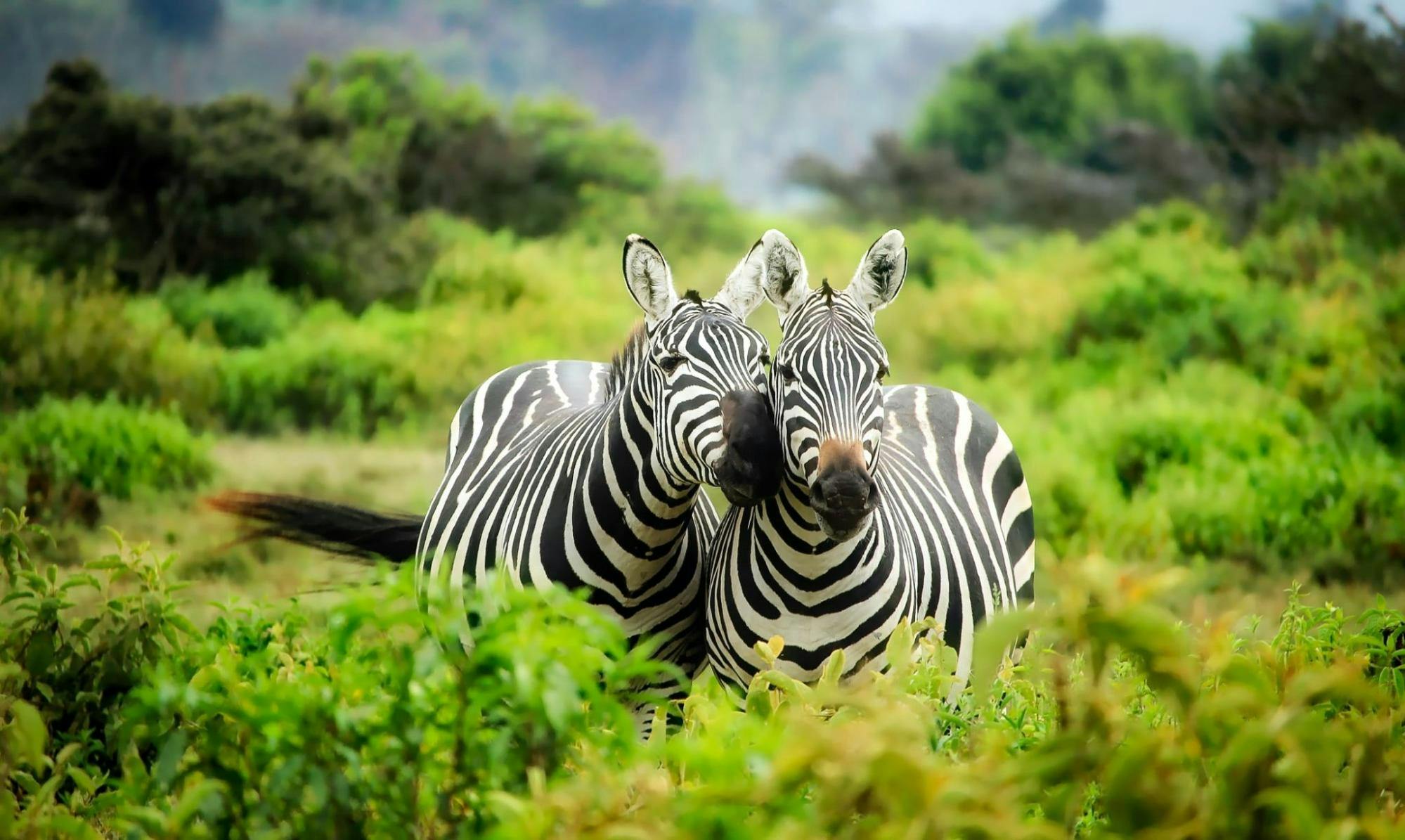
Whether it’s live webcams of adorable pandas or behind-the-scenes tours with zookeepers, zoos all over the world offer ways for animal antics to delight and entertain your students.
Some of our favorites include:
- Edinburgh Zoo’s Panda Cam
- Georgia Aquarium’s Beluga Whale Livestream
- The Smithsonian National Zoo’s Naked Mole-rat Cam
- A live feed of African river wildlife in Laikipia County, Kenya
- The San Diego Zoo Live Ape Cam , or any of their other live animal feeds
- Home Safari videos from the Cincinnati Zoo, where zookeepers introduce you to the hundreds of animals that make the zoo their home.
2. Visit The Hidden Worlds of National Parks
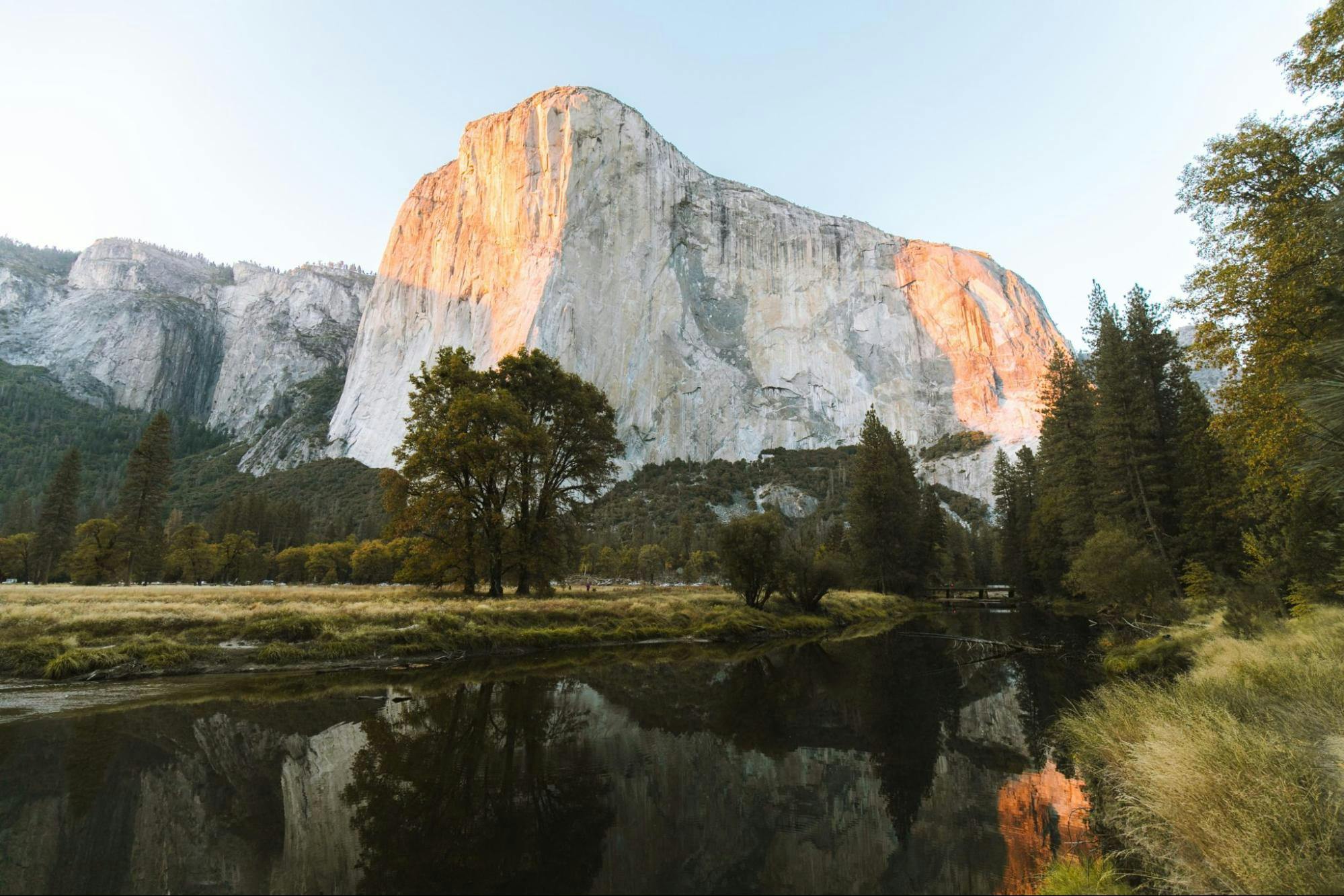
From Yosemite to Mesa Verde, explore some of the USA’s most beloved and beautiful national parks with The Hidden World of National Parks .
Supported by Google Arts & Culture , students can use the same technology that powers Street View to explore the national parks at their own pace.
The program also includes guided tours from park rangers, where they share their expertise as you explore. Follow the on-screen prompts and let them guide your adventure!
3. Watch the Monterey Bay Aquarium Sea Otters
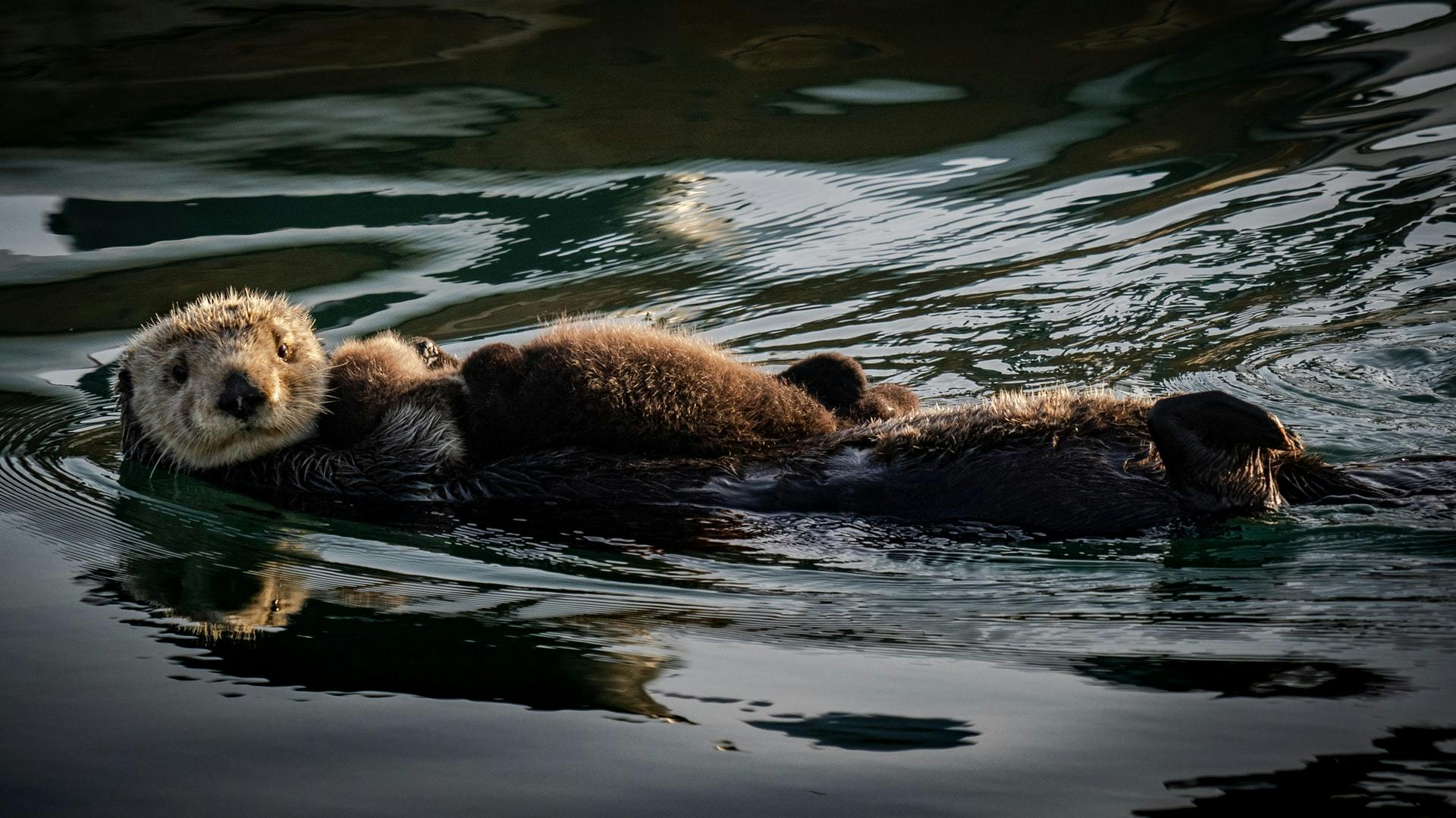
Play with the sea otters as they swim around Monterey Bay Aquarium in California! Tune in throughout the day to see them being fed, learn fun facts about otters and watch them play in the water.
If you’d like to check out some other aquarium-related channels, Monterey Bay Aquarium also offers Open Sea or Kelp Forest live streams.
4. Swim through Palau coral reefs
Travel to the Pacific Ocean through a virtual adventure and see the Palau coral reefs . Hosted by Nature Lab and the Nature Conservancy, this tour teaches students about the importance of preserving some of the most fragile ecosystems in the world — no wetsuit required.
Take learning to the next level with the Nature Lab’s Teacher’s Guide , which includes discussion questions and related resources to keep learners engaged.
5. Visit the surface of Mars

It took the Perseverance rover about seven months to get to Mars. But thanks to this virtual tour , you and your students can go for a visit in just one afternoon.
Created by Google and NASA’s Jet Propulsion Laboratory, this virtual tour takes you through the history of Mars explorations and turns what might be a far-flung topic into something right at students’ fingertips. They’ll explore the surface of Mars, learn more about the rovers that have studied its surface and understand how Mars exploration fits into the history of space travel.
6. Power up with renewable energy
Powering the Planet from the Nature Conservancy is an interactive lesson that focuses on renewable energy sources. It explains to students how energy around them is necessary for life, and covers how energy can be sourced in a way that’s not harmful to the environment.
All the Nature Conservancy’s programs come with a Teacher Guide , which offers lesson plans and activities relating to the virtual tour.
7. Walk the Great Wall of China

The Great Wall of China is over 13,000 miles long, so be sure to pack your walking shoes for this trip!
This virtual tour lets students explore key points in the Great Wall of China, plus see the history and amazing view up close.
8. Float around the International Space Station

Did you know that astronauts have continuously inhabited the International Space Station for 20 years? Now your class can join them!
With tours of the different parts of the space station, facts about the layout and assembly, and information about the different astronauts who’ve visited from around the world, students can get an out-of-this-world experience from the comfort of their home or classroom.
Plus, there are plenty of images, videos, graphics and media resources to help you tie topics into your curriculum.
9. Scuba dive in the Great Barrier Reef
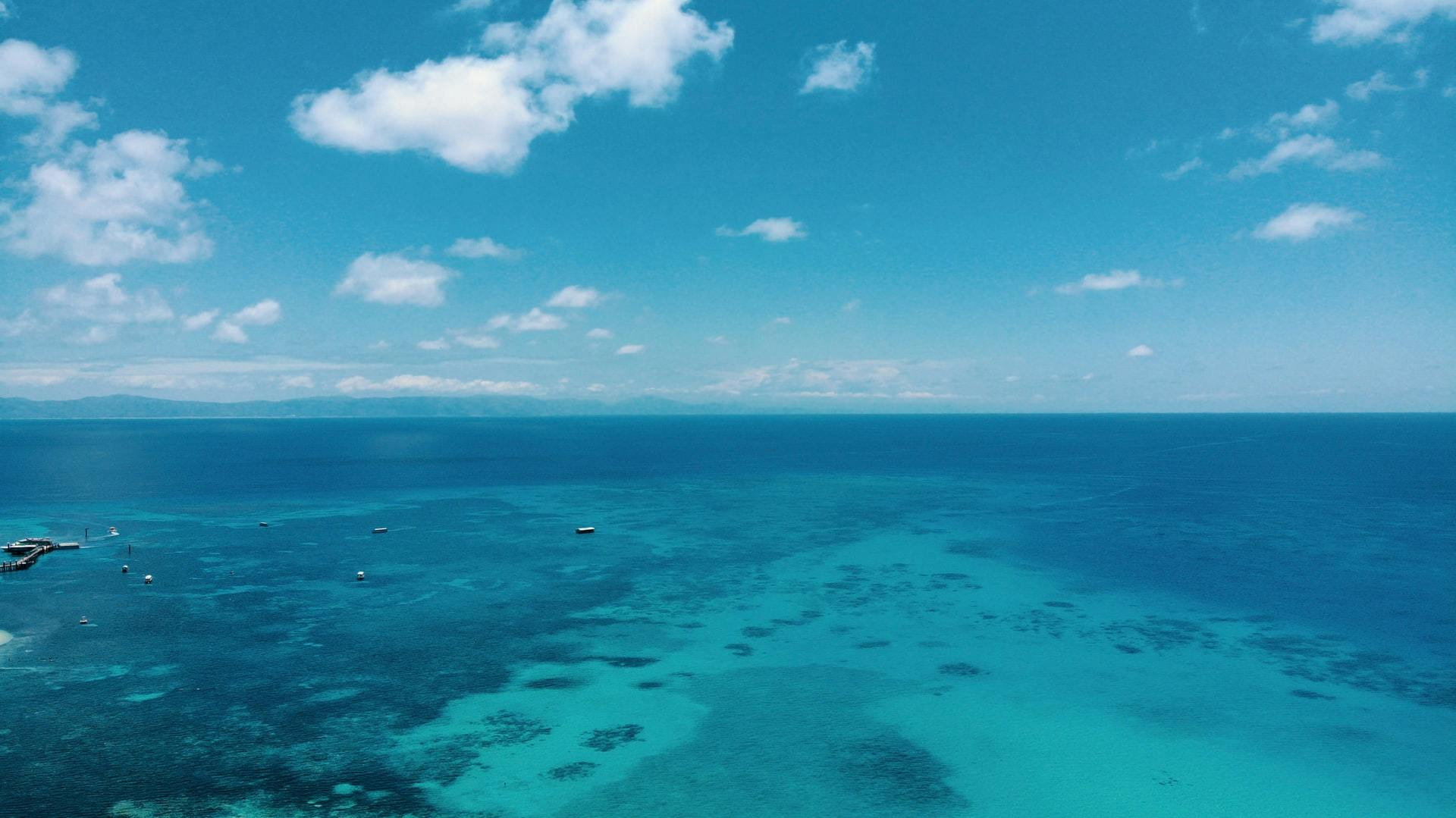
The Great Barrier Reef is a delicate ecosystem especially vulnerable to the effects of pollution and climate change.
David Attenborough’s Great Barrier Reef is a tour created in partnership with the Natural History Museum in London that teaches everyone about the beauty and fragility of one of the world’s greatest natural wonders.
The Great Barrier Reef is also available on Google Street View through Google Maps as one of the first underwater locations to be mapped.
10. Learn about water and Colombia’s páramo ecosystem
Just outside of Bogotá, Columbia, is one of the most diverse ecosystems in the world. In this virtual lesson, students will learn about how the water cycle plays a vital role in biodiversity, and get an up-close look at the animals that call the area home.
Use the accompanying Teacher Guide to help students discuss the topic and stay engaged with the lesson. And check out the rest of the Nature Lab's YouTube channel for even more virtual experiences.
11. Tour the Smithsonian Museum of Natural History

The Smithsonian Institute is the world’s largest museum — so there are plenty of things for students to explore.
With a variety of virtual tours to choose from, the Smithsonian Museum of Natural History is full of ways to get students excited about learning. Students can watch narrated tours of different exhibits ranging from history and geography to the research stations in the museum.
Whether students want to walk through the museum on their own or let someone else do the talking, there’s something for every lesson.
12. Get caught up in the American Revolution
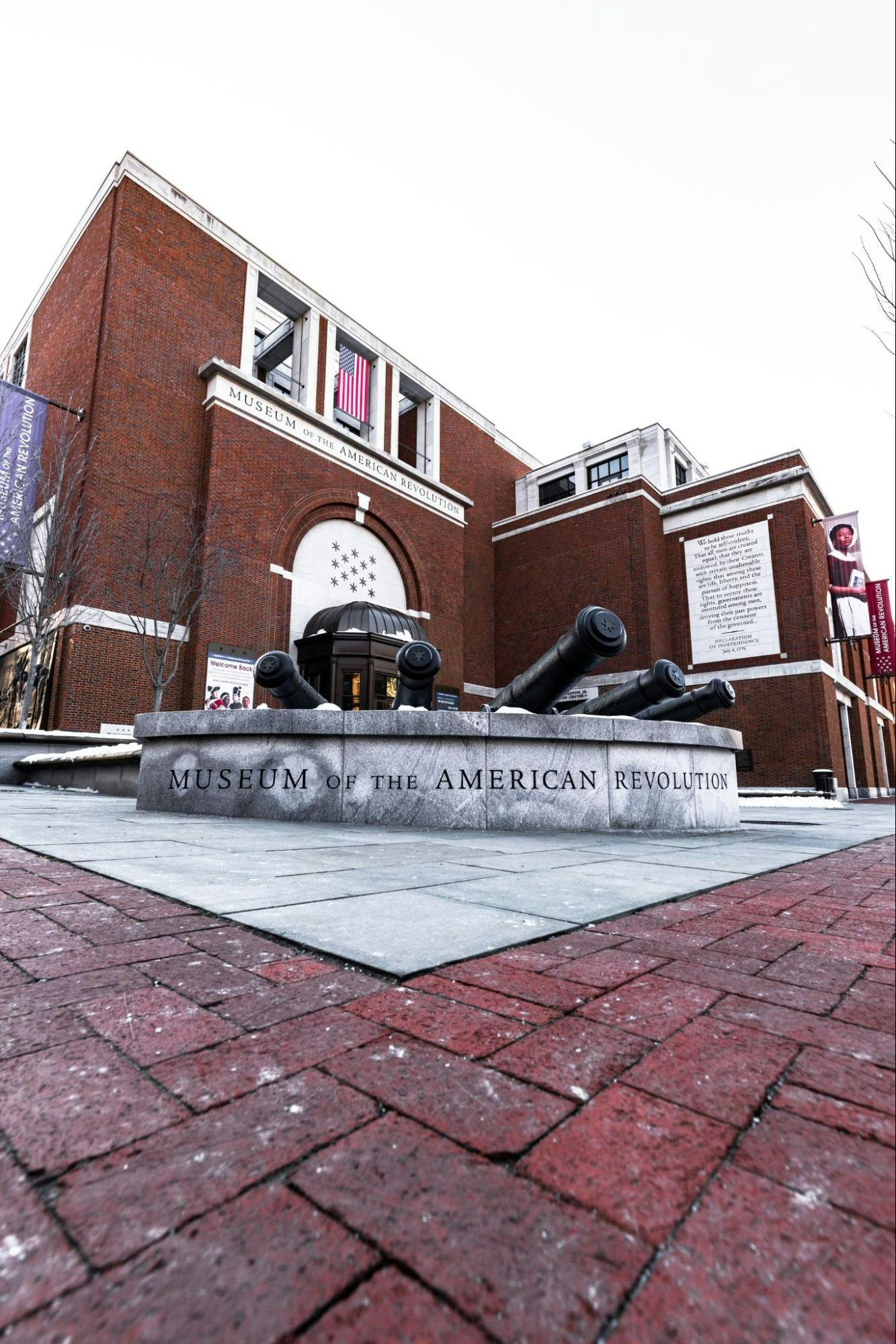
History meets the present at the Museum of the American Revolution !
This virtual tour lets students see artifacts, meet museum staff and hear stories of real people who fought for American independence.
It also comes with a Classroom Ki t for 2nd to 8th grade that supplements learning and makes it even more meaningful.
13. Trek up Mt. Everest
This 360 degree video from National Geographic lets students explore Mt. Everest along with a group of researchers. Together, they’ll discover what kind of effects climate change has on the mountain, and how we can work to preserve natural landscapes.
Not up for climbing mountains? Take a virtual ride on Expedition Everest , the tallest rollercoaster in any Disney park! But beware — there’s a monster lurking in the dark.
14. Get the right angle with Explore Geometry

Powered by Nearpod, Explore Geometry ’s lesson plans connect classroom lessons with architecture in the natural world.
Students can explore the gardens of Versailles to learn about the geometry of a French garden before moving on to the next lesson and putting their skills to practical use.
15. Wander through the Metropolitan Museum of Art in New York City

One of the most well-known museums in the world, students can now explore The Met’s vast collections with the Met 360º Project .
Virtual tours help students get a sense of the space, art and collections inside of the museum. Whether they’re interested in the Met Cloisters or the Arms and Armor gallery, students can go at their own pace, accompanied by a soothing soundtrack.
You can also book virtual tours with a museum guide to line up with your lesson plan. Tours are free for NYC public schools and all Title I schools, and $200 USD per class for other schools.
16. Explore history in the British Museum
Another world-class museum, students can explore the British Museum in London using Google Street View, read facts about the artifacts and connect what they see to their history lessons.
Whether it’s the Rosetta Stone, the Elgin Marbles, Egyptian sculpture or any other historical treasure, there’s something every student will find interesting!
If you want to let someone else do the exploring, there’s also a 46-minute virtual walking tour , where you can skip to the sections that are most relevant to you and your class.
17. Visit the White House

In Washington, D.C. the White House is the symbolic heart of America, and now students can walk the halls for themselves.
Whether they want to take a lap around the Oval Office or wander the building, students can explore this virtual tour from the White House Historical Association . Plus, it comes with class tie-ins like vocabulary lessons and other activities to make the experience even more memorable!
18. Arrive at Ellis Island

Ever wonder what it was like for new immigrants to see the Statue of Liberty and step foot on American soil for the first time?
Now students can experience it for themselves with this virtual tour , a collaboration between Scholastic and the National Park Service. They’ll learn the importance of immigration in the history of the United States and hear real-life stories about the people who came looking for a better life.
After students watch the video, they can click through this interactive map with facts and stories about the people who came through Ellis Island.
19. Explore China's forests
In this online tour, students can explore the natural habitats of pandas in the forests of China . They’ll discover how the panda’s home plays a role in understanding our world, learn about local conservation efforts and see the big-picture view of how these vast forests fit into our understanding of nature and climate change.
Plus, this program also comes with a handy Teacher Guide for you to use in lesson planning!
20. Bundle up in the Arctic tundra
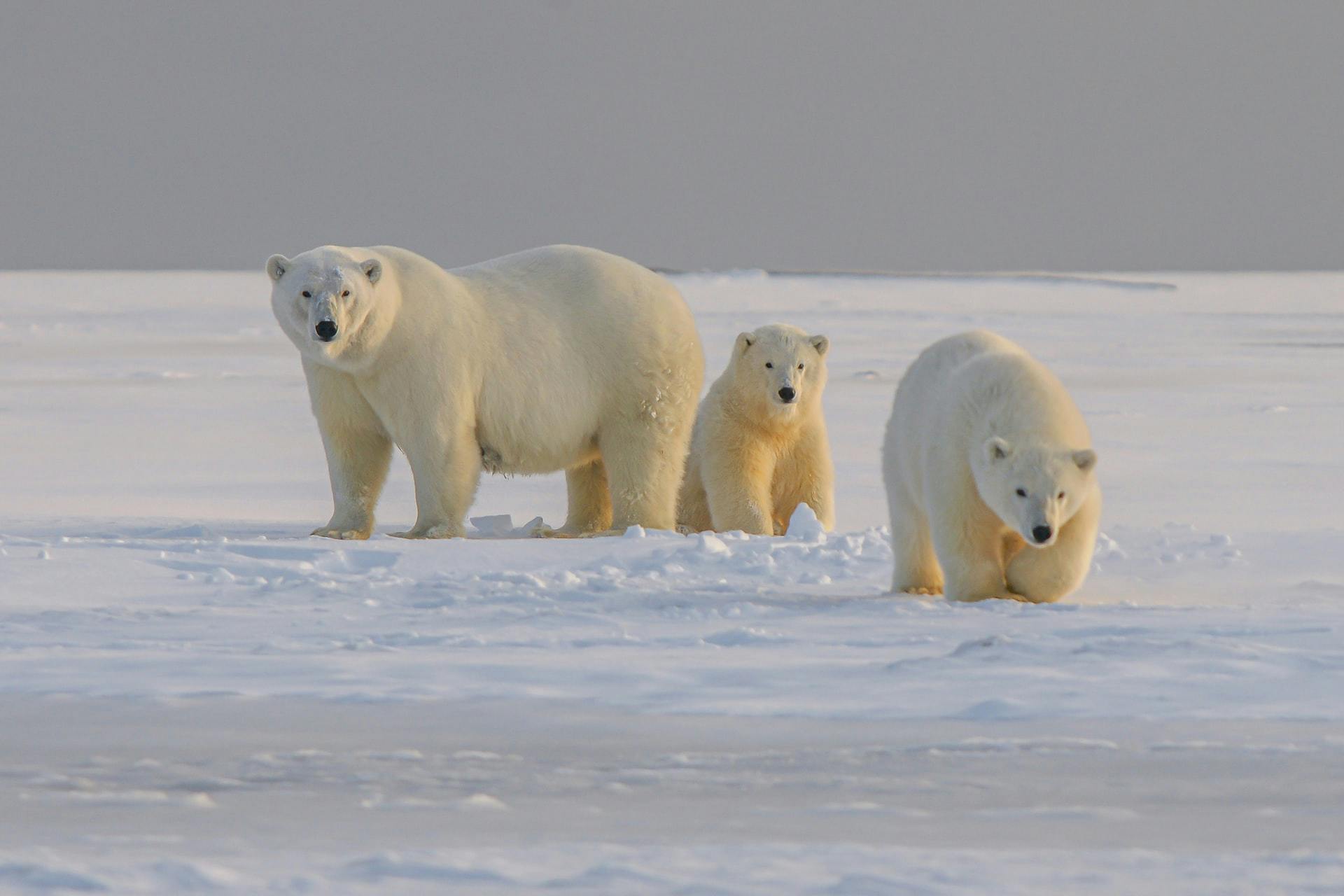
Take a virtual field trip all the way up north to the tundra! Discovery Education’s tundra programs for elementary, middle and high school students cover the natural habitat of polar bears, plus their activities and migration patterns.
This virtual tour comes with instructional activities and classroom tie-ins, so you can be sure students are getting a productive learning experience.
21. Go spelunking in the world's largest cave
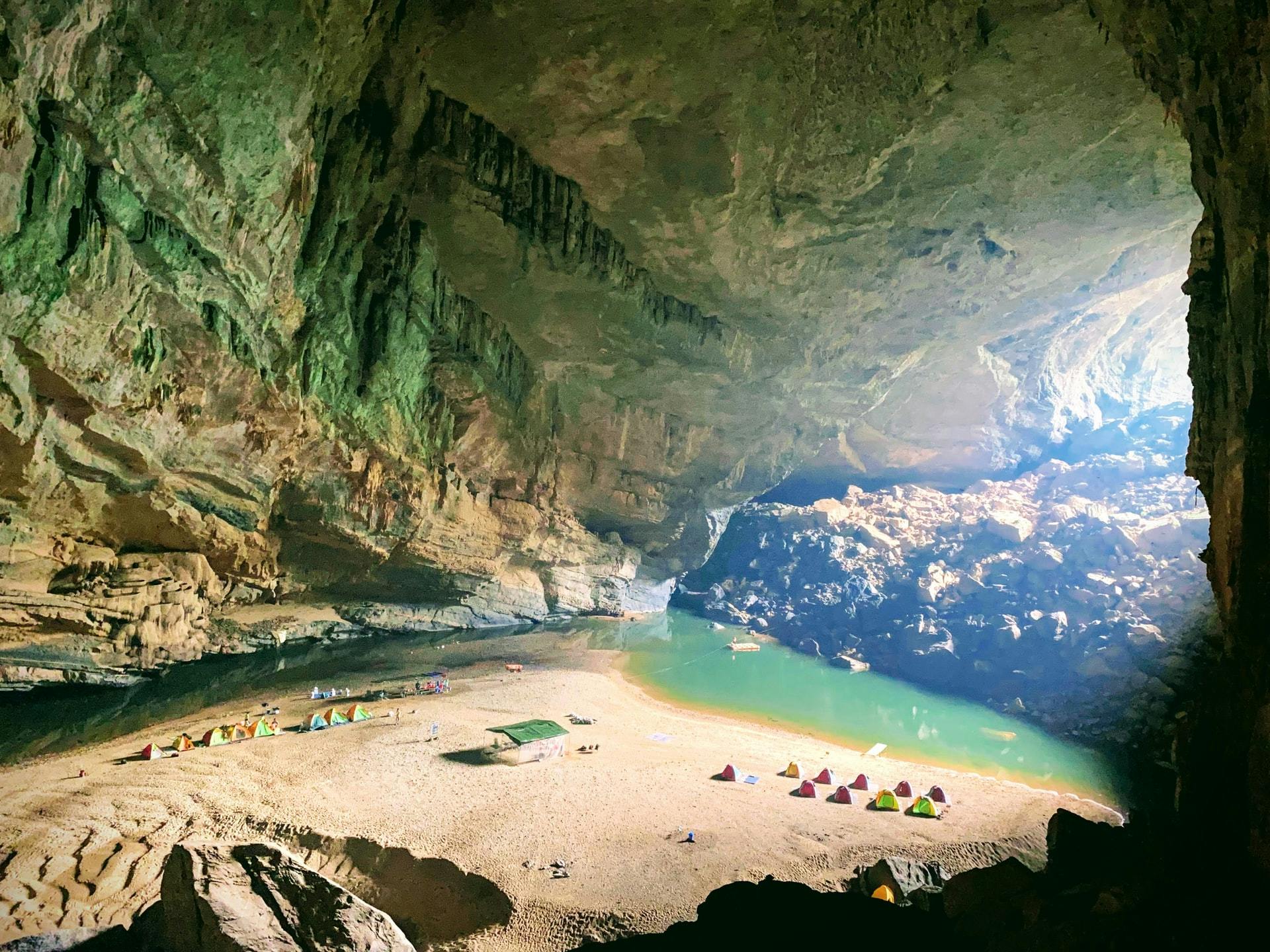
Travel through Vietnam’s Son Doong, the world’s largest cave . First explored by researchers in 2009, this cave is up to 200 meters tall in some areas and even has its own jungle inside.
It’s estimated that the total length of the cave system is over 200 kilometers, and with this National Geographic tour students can explore to their heart’s content. High definition pictures and helpful facts mean that not only is this an awe-inspiring trip for students, but it’s also educational!
Because the cave is ecologically sensitive, only a certain number of tourists are allowed to visit each year. This virtual tour is a great way for kids and adults to experience the wonder up close!
22. Browse the Louvre

Take your students on a quick trip to Paris where you can explore the architecture and art of the Louvre without the crowds.
Plus, the Louvre also offers Louvre Kids , as well as a Mona Lisa Beyond the Glass virtual app experience where users can learn how Leonardo da Vinci created his most well-known masterpiece.
From kindergarten to high school, virtual field trips are a great way to get students excited about learning. And if you’re homeschooling , they’re the perfect way to get real-world experience without leaving the house!
To get the most out of the experience, keep these tips in mind:
- Ask students what they’re interested in exploring
- Look for virtual experiences that fit into your lesson plan for maximum impact
- Search for supplementary resources like teacher guides and discussion questions
- Try out the virtual tour first to make sure it’s worth it and to avoid any unpleasant technical glitches
- Use virtual field trips at the beginning of a unit to introduce students to new concepts, or at the end as a reward and wrap-up activity
Be sure to follow up with students and see what they liked the most. Then, harness that excitement for your next lesson or activity!
Prodigy Math Game is an adaptive math platform where students can explore a world filled with adventure, excitement and rewards — all for practicing math! While they’re having a blast answering questions and completing epic quests, Prodigy’s free teacher tools help you align their learning to your classroom lessons.
Sign up for your free teacher account today!

Virtual Field Trips
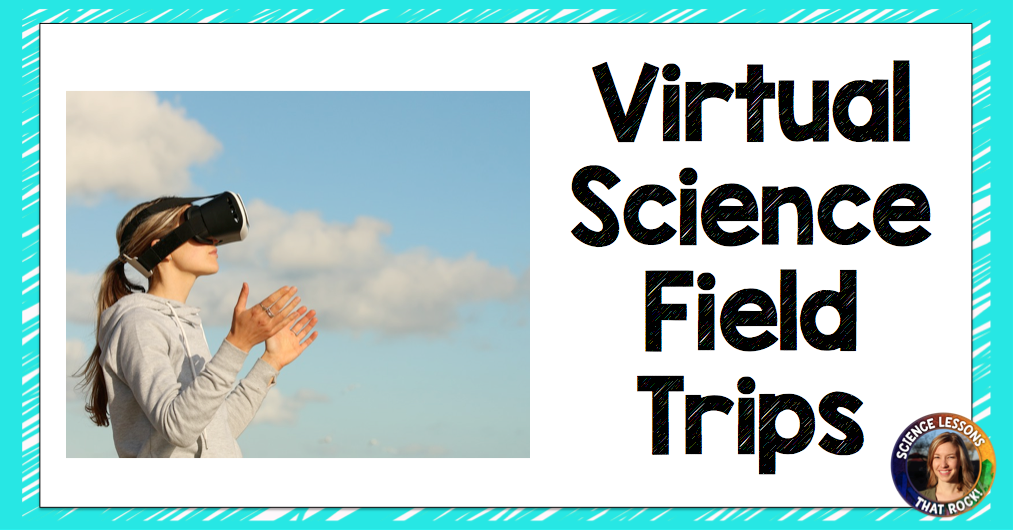
1. Virtual Field Trips.org is a great place to start. They have videos that can take students to the galapgos, national parks, and the amazon. Head here to watch!
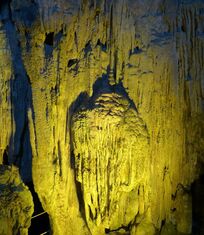
11. The Smithsonian has a virtual tour of their “deep time” exhibit . A great place to check out extinct fossils!

- Read more about: Field Trips , Media in the Classroom , Technology

Hi, I'm Becca!
Search the site, browse by category.
- A list of ALL blog posts
- Back to School
- Biochemistry
- Body Systems
- Classification
- Classroom Decor
- Classroom Management
- Distance Learning
- End of the School Year
- Experiments
- Field Trips
- For NEW Teachers
- Formative Assessment
- Media in the Classroom
- Microscopes
- Photosynthesis & Respiration
- Plate Tectonics
- Sustainability
- Teacher Tips
- Weather and Climate
Get Freebies!
You might also like....

Science Seek and Finds

Layers of the Earth Lessons

Teaching the Electromagnetic Spectrum

Let me help your students with experimental design!

Privacy Overview
Our work: Digital Learning
Virtual Field Trips
Digital field trips offer unique affordances to expand access to locales, capture sense of place, and foreground agency within an experiential learning environment.
The Virtual Field Trips program develops tools and learner-centered frameworks to create and co-experience navigable worlds via immersive, 360-degree photos and videos.

Virtual field trips (VFTs) can take a variety of forms, but at their core, they enable learners to engage with a location, often without physically traveling there, in a digitally mediated way. VFTs can broaden access to locations and experiences and may help mitigate inequities due to cost, accessibility, or inclusivity. Advances in technology have reduced the barriers to creation, opening opportunities for educators and students to become content creators, embedding concepts in locally or personally meaningful contexts.
The science and design behind how to structure activities to create engaging and effective virtual field trips is lagging behind technology growth. Virtual field trips have the potential to support learning by increasing learner connectedness, whether to the land, to a phenomenon, or to other people. This program aims to explore and promote the use of virtual field trips for supporting meaningful learning.
Faculty leads

Dan Schwartz
The Halper Family Faculty Director, Stanford Accelerator for Learning and Faculty Director, Digital Learning Initiative

Bryan Brown
Professor, Graduate School of Education
Research team
Kristen Pilner Blair
Director of Research, Digital Learning Initiative
Keith Bowen
Director, Learning Design Challenge
Catherine Chase
Research Director, AI + Education
Senior Research Scholar, Graduate School of Education
Social Science Research Professional, Graduate School of Education
Ryan Petterson
Director of Field Education, Doerr School of Sustainability
Ana Saavedra
Postdoctoral Scholar, Graduate School of Education
Joe Sherman
Digital Media Producer, Graduate School of Education
Kendra Sobomehin
Doctoral Candidate, Graduate School of Education
Reuben Thiessen
Project Management Specialist, Stanford Accelerator for Learning
Wilson Wang
Assistant Director of Data Science & Cloud Architecture, Graduate School of Education
Director of Digital Learning Solutions, Graduate School of Education
Rachel Wolf
Social Science Research Scholar, Graduate School of Education
Anna Queiroz
Postdoctoral researcher, Communication
How virtual field trips work
Virtual field trips offer unique affordances to expand access to locales, capture sense of place, and foreground agency within an experiential learning environment.
Resources for educators
Helping Students and Educators to Create VFTs
The Stanford Accelerator for Learning is developing resources and frameworks to support practitioners and learners to create and share their environments through virtual field trips.
We are finding that engaging with and creating their own virtual field trips can help students see science as more relevant to themselves and their communities, and support rich learning opportunities. In collaboration with elementary, middle, and high school teachers and informal educators, we are developing lesson plans, templates, models, and guides to support effective creation and sharing of virtual field trips.
Developing Science Instruction Modules for Teachers
Our team works to create, study, and share models of virtual field trips that educators can integrate into their curriculum, advancing rich and responsive science education. We are developing and studying ways virtual field trips can be incorporated in to science curriculum, including:
- Next Generation Science Standards-aligned modules that can be incorporated into high school classes
- Modules for teaching college-level geology that will be empirically tested at Stanford and made publicly available to instructors everywhere.
- Models of integration with in-person field experiences to reduce anxiety when used as preparation and support feedback when used post trip.
Funding opportunities
To catalyze Stanford’s interdisciplinary expertise to advance research, creativity, and implementations of virtual field trips as a way to provide rich digital experiences that go beyond traditional “textbook” content, we fund VFT research and design projects.
To date, we have funded 14 proposals representing 6 of Stanford’s 7 schools. Through this work we are developing a community within Stanford interested in advancing learning through virtual field trips, and we are learning about new models for teaching and assessing with virtual field trips in domains ranging from ecology to civil engineering to music.
The Science and Design of Virtual Field Trips
Explore a virtual field trip.
Fourth grade students from High Tech Elementary North County created a virtual field trip to teach others about the geology of their local county parks. Click the blue arrows to explore.
Stay connected
Join our email community to get updates delivered right to your inbox.
Boobytrap Label
Join our community
Solar Eclipse 2024 Video & Activity | Science | Virtual Field Trip

- Internet Activities
Description
During a total solar eclipse, the moon moves between the earth and sun completely obscuring the sun for a few moments. On Monday, April 8, 2024, a total solar eclipse crossed North America. The eclipse passed over parts of Mexico, the central and eastern United States, and southeastern Canada. Were you in the path of totality?
In Miss Stephanie's awesome 17 minute virtual field trip video , students will learn everything they need to know about this amazing event! As they watch the video, they can complete the activity page to record key information.
Fill in the blank, True/False, and a open-ended written response (RACE).
2 Versions:
- 1 to use as a whole class activity
- 1 to complete independently or as a group activity (video QR code and link included on the PDF printable)
Also included:
- Solar/Lunar Vocabulary Activity
- ANSWER KEY INCLUDED
Questions & Answers
- We're hiring
- Help & FAQ
- Privacy policy
- Student privacy
- Terms of service
- Tell us what you think

IMAGES
VIDEO
COMMENTS
Dramatic glacier-covered rugged mountains, a temperate rainforest, craggy rock-towered coastlines, giant sand dunes, ancient cliff dwellings, and steep sheer rock canyons. All of these landscapes, their history, and more are explored in this tour of the National Parks of the northern part of the Western region. Video length: 27:05 minutes.
Explore the World with Virtual Field Trips. Designed for ages 9-15 but customizable for all ages, virtual field trips allow students to travel the world and explore natural environments without leaving the classroom. Each virtual field trip contains a video, teacher guide and student activities.
Virtual field trip sites. 1. Project Noah. A free resource for wildlife identification. Users create wildlife journals by sharing photos from nature and identifying species. Students may create ...
The classic preschool field trip goes online! You can have your pick of dairy farm field trips, but we like this one from the Dairy Alliance and this one from Stonyfield Organic. Farm Food 360 gives students the opportunity to immerse themselves in Canadian farm and food tours—from raising pigs to making milk and cheese. We're also loving these virtual egg farm field trips from the ...
Free On-Demand Video Field Trips. English and Spanish. 15-20-min. segmented episodes driven by a question of the day. No prep necessary! Functional in any learning environment. Visit the California Science Center and meet our staff virtually. High-quality, grade-appropriate, engaging! Browse by grade level.
Watch these 45-minute videos with your class—any time! They're perfect for grades 3-8, and each includes a teacher's guide packed with discussion questions and more. Check them out below. 1. The Deserts and Grasslands of Africa. Head to Africa with scientist Charles Oluchina, where you'll discover the importance of grasslands and ...
3. Internet of Things: Infinite Possibilities Virtual Field Trip: The Internet of Things refers to a collection of computing devices - such as smart speakers, thermostats and sensors -which are connected to a network to allow for an improved real-time data to better manage two of the most critical resources to humanity: energy and water.
For reservations, call 810-237-3409. Whether you're teaching remotely or in the classroom, we can virtually present interactive science content to your kids. Activity kits include all the materials for fun, hands-on exploration that aligns with state standards. ⭐ Virtual Field Trips for Classroom Learning: Programs marked with a gold star ...
Carnegie Science Center is your partner for virtual field trips and dynamic online STEM programs! By supporting what you're teaching in the classroom, the Science Center's curriculum-aligned virtual programming encourages students to let curiosity drive them, think critically, use teamwork, and creatively express their ideas. No matter what ...
The list of free virtual field trip resources here is adapted from my ISTE Live presentation in December 2020. Students can access these resources without logging into a new website—teachers can post the link to a 360 degree panoramic image or interactive experience in a platform students already use, making it easy for them to access in both traditional classroom settings and at home.
Virtual Field Trips. Spark wonder, curiosity, and conversation in your classroom with a virtual field trip! Book one of our FREE interactive programs with a live educator at a date and time most convenient for you. All you need to participate is a computer, webcam, and internet access. Schedule a 45-60 minute live online presentation for your ...
Virtual Science Field Trips for Students. The COVID-19 pandemic poses unique challenges for educators. From ensuring students are safe in classroom settings to adjusting content delivery methods and finding ways for learners to effectively participate — even when they're socially distant — 2020 is breaking new operational ground in ...
Featured and Upcoming Virtual Field Trips. Join us for our Virtual Field Trips or watch them on-demand after their premieres. Each no-cost Virtual Field Trip comes with a companion guide packed with standards-aligned, hands-on learning activities! Select one of the options below to register.
The rise of online learning activities during the pandemic accelerated the availability of virtual field trips, tours and experiences for students of all ages. Now there are many interactive virtual tours available to places that would be impossible to reach on a class trip — the pyramids in Egypt, the Louvre museum in Paris or even an ...
Let students explore Carlsbad Caverns with this virtual tour. Check it out here. 3. ASU has a ton of great virtual field trips, especially for earth science teachers. You can find it here. 4. The Nature Conservancy also has a variety of field trips to choose from. They have teacher guides and videos for a ton of topics.
The Virtual Field Trips program develops tools and learner-centered frameworks to create and co-experience navigable worlds via immersive, 360-degree photos and videos. ... We are finding that engaging with and creating their own virtual field trips can help students see science as more relevant to themselves and their communities, and support ...
Virtual Field Trips allow students of all ages to observe Museum exhibits up-close and complete an activity in order to gain scientific understandings. Virtual Field Trips are: Customizable: You can do a virtual hall tour with a student worksheet that is designed to span about one class period, or you can assign additional activities to extend ...
Fifth Grade Virtual Field Trips. Engage your class in a selection of grade-specific, standards-based activities! All activities and lessons were carefully crafted with an eye towards Next Generation Science Standards for Fifth Grade students. Available in two exciting topics: Jump to other Virtual Field Trips: Kinder | 1st grade | 2nd grade ...
They are convenient, cheap and easy ways to travel with students and kids and offer learning opportunities similar to an actual field trip. Travel the world with these 60 Educational & Fun Free Virtual field trips for students. 1. The Zoo; 2. National Parks; 3.
Find a virtual field trip or activity for your class! Getting Started with Virtual Field Trips. 1. Hidden World of National Parks. 2. Stages Around the World 360 Tour. 3. Hall of North American Mammals. 4.
Space Foundation Discovery Center is undergoinga transformative remodel, renovation, and expansion. Please look for our Virtual Field Trips to be available again starting June 2024. Space Foundation supports K through 12 students with standards-based curriculum that uses space principles to integrate science, technology, engineering and math ...
Second Grade Virtual Field Trips. Engage your class in a selection of grade-specific, standards-based activities! All activities and lessons were carefully crafted with an eye towards Next Generation Science Standards for Second Grade students. Available in two exciting topics: Second Grade Physical Science: Suiting Up For Space! Jump to other ...
On Monday, April 8, 2024, a total solar eclipse crossed North America. The eclipse passed over parts of Mexico, the central and eastern United States, and southeastern Canada. Were you in the path of totality? In Miss Stephanie's awesome 17 minute virtual field trip video, students will learn everything they need to know about this amazing event!